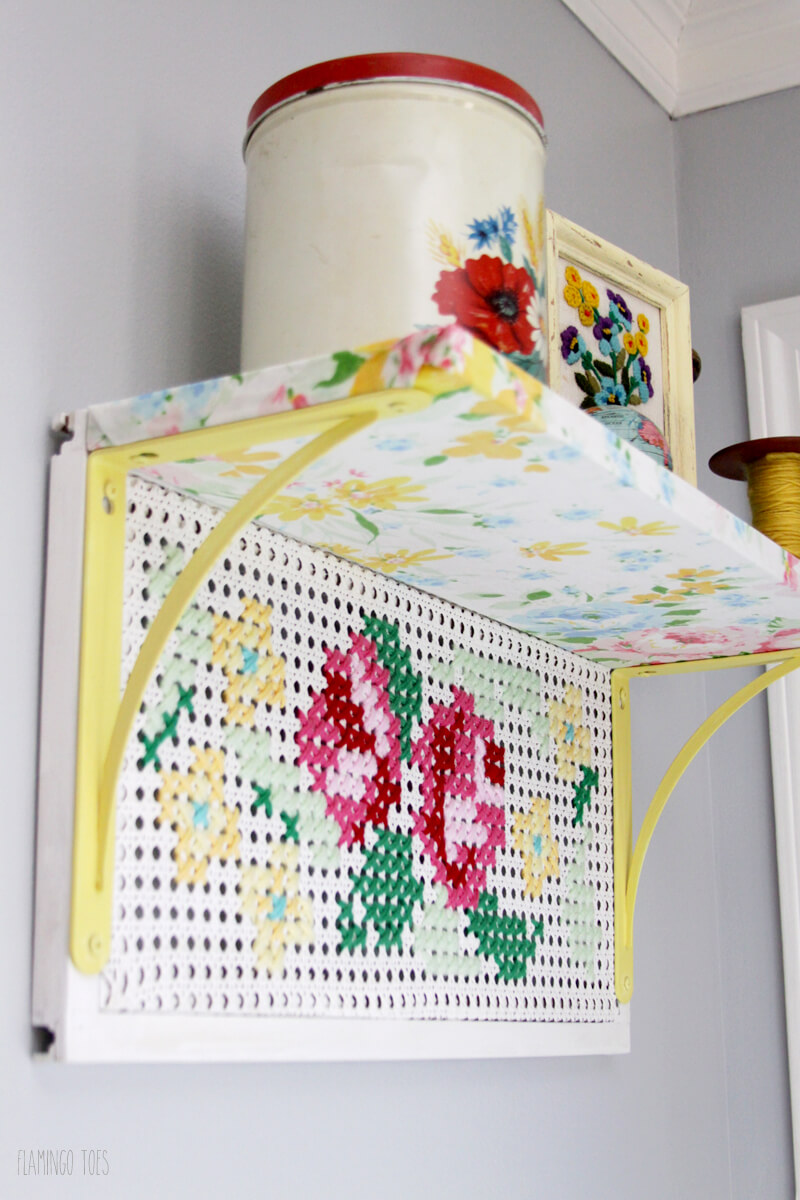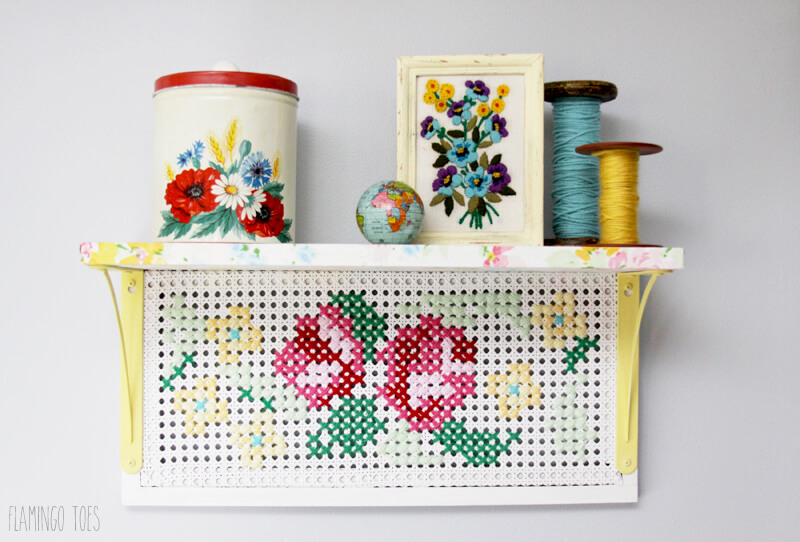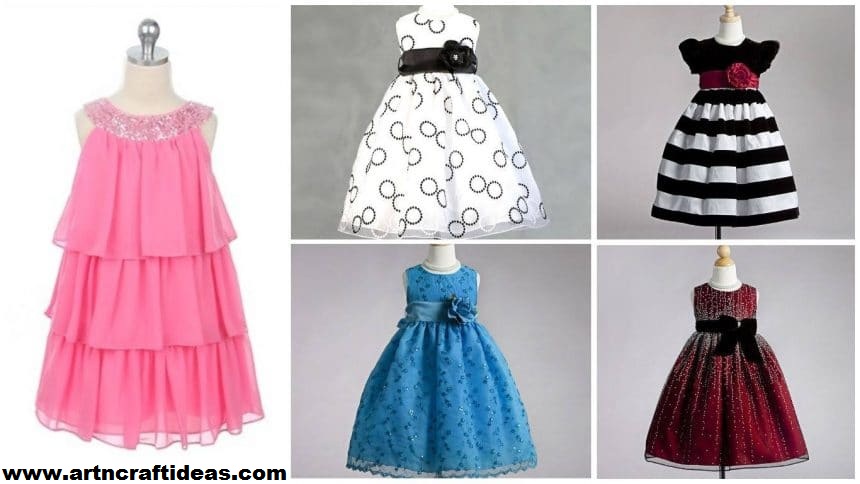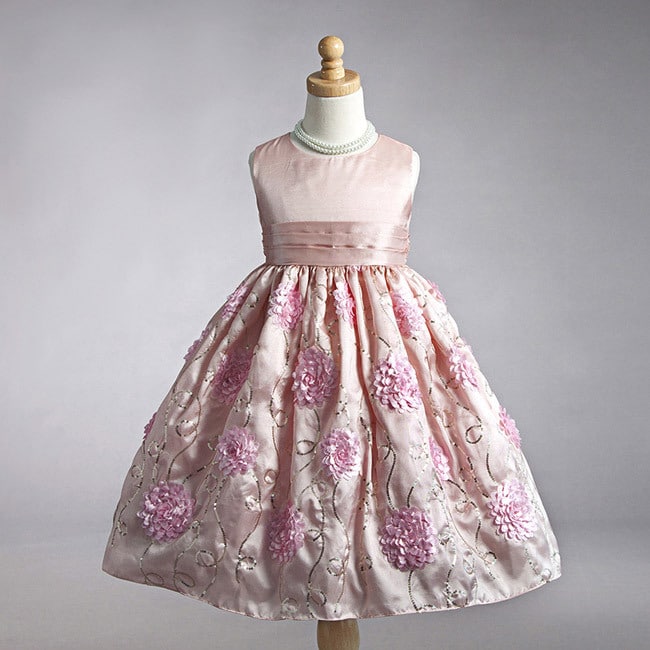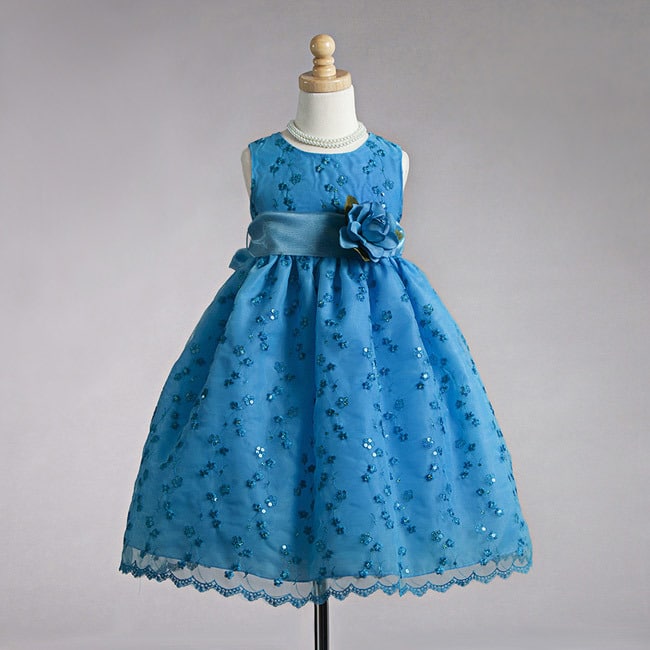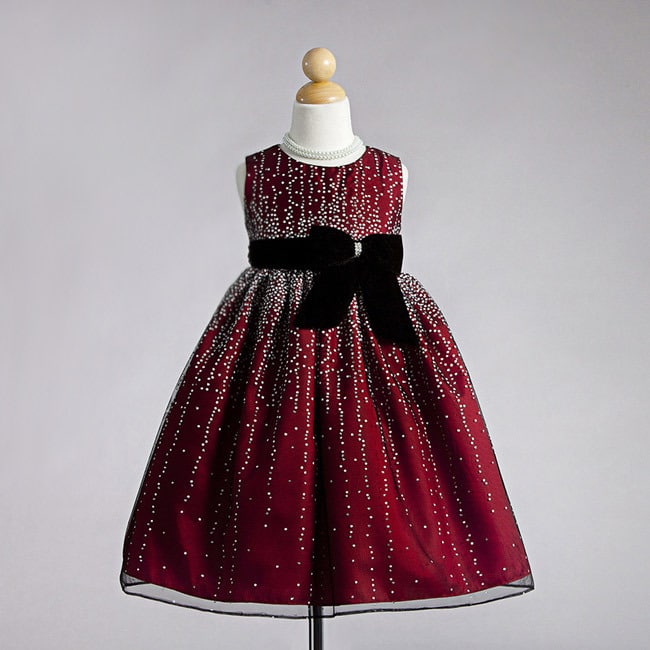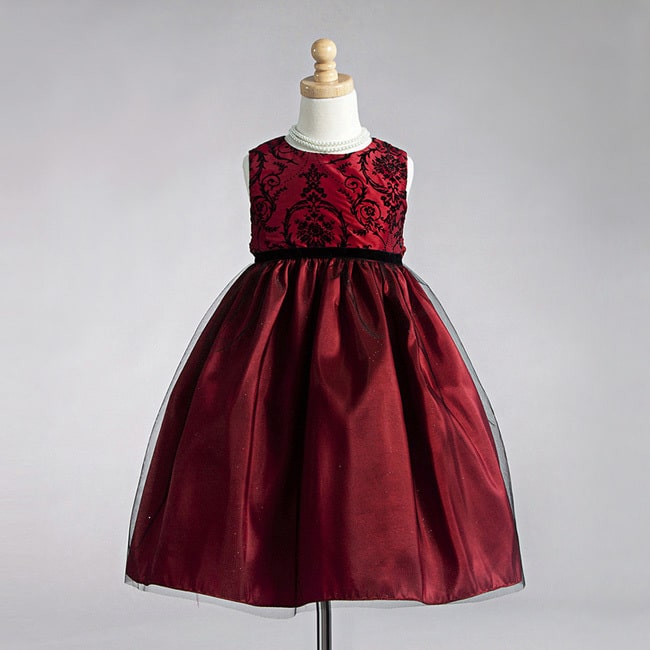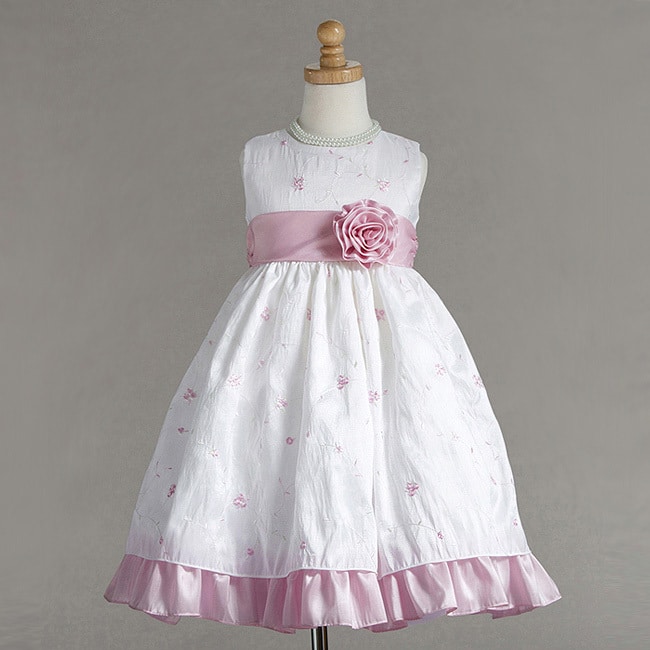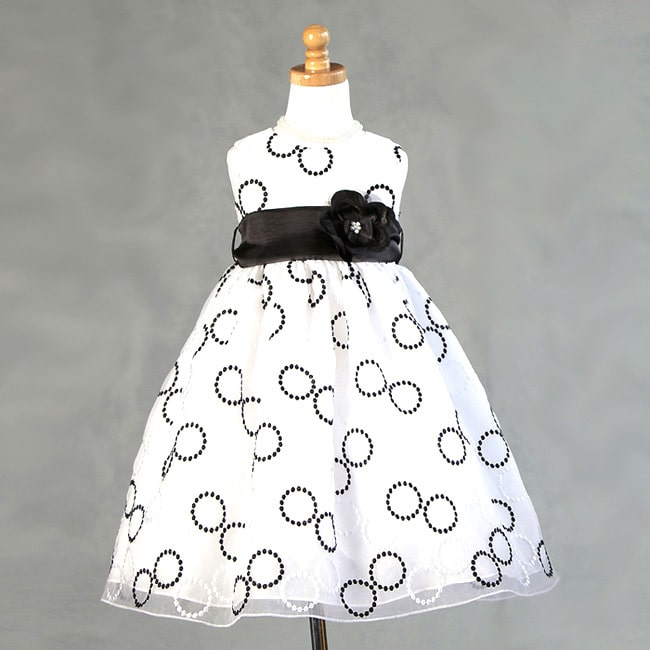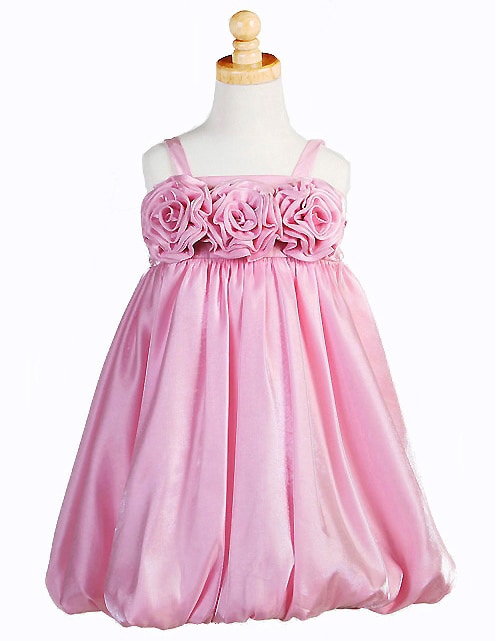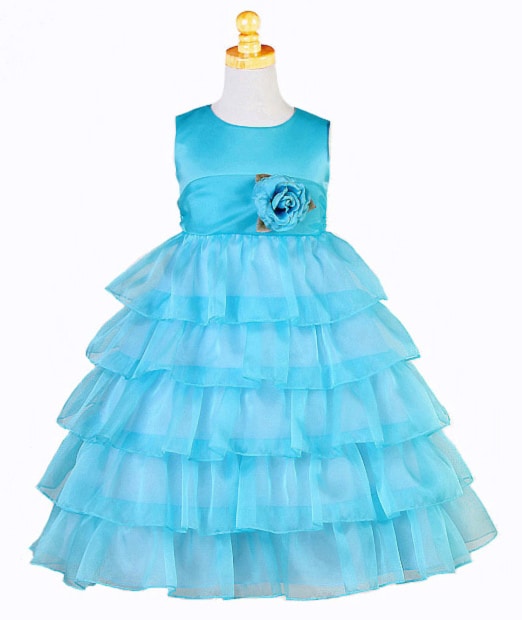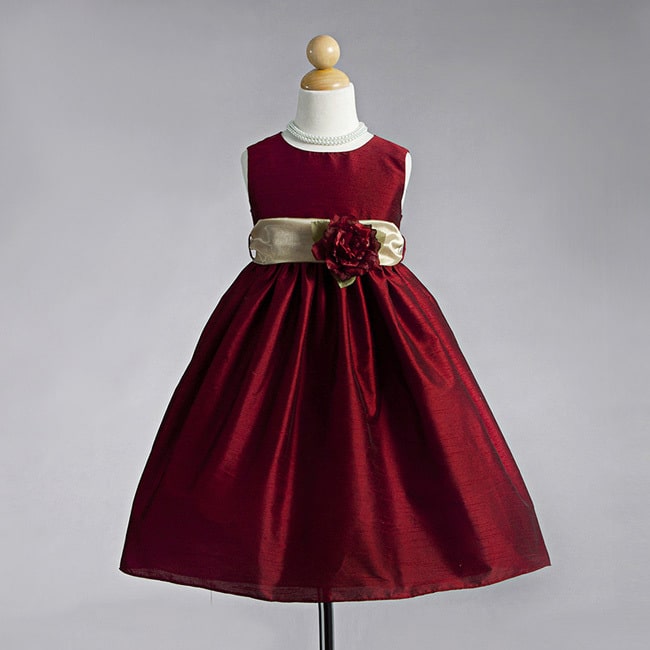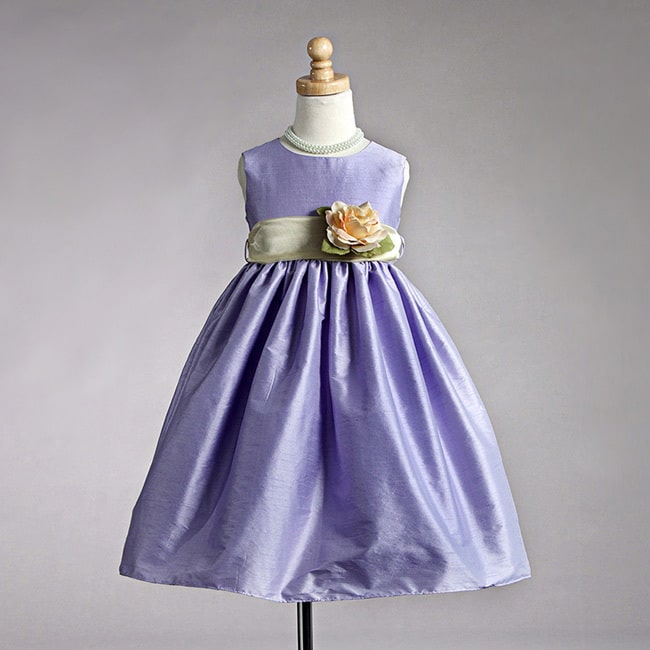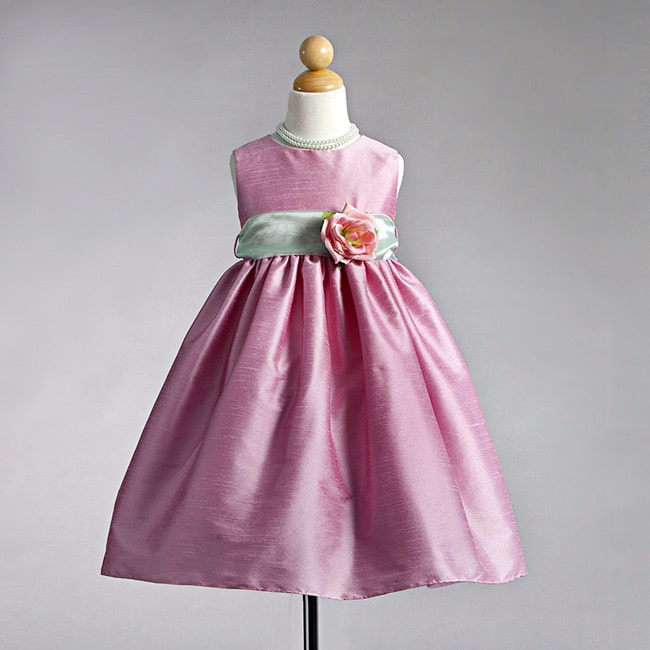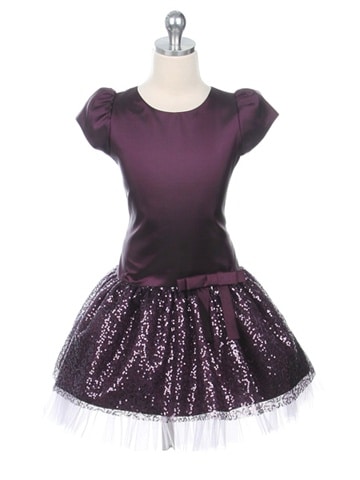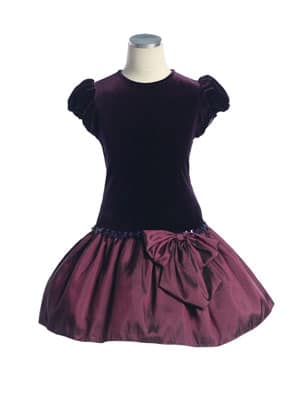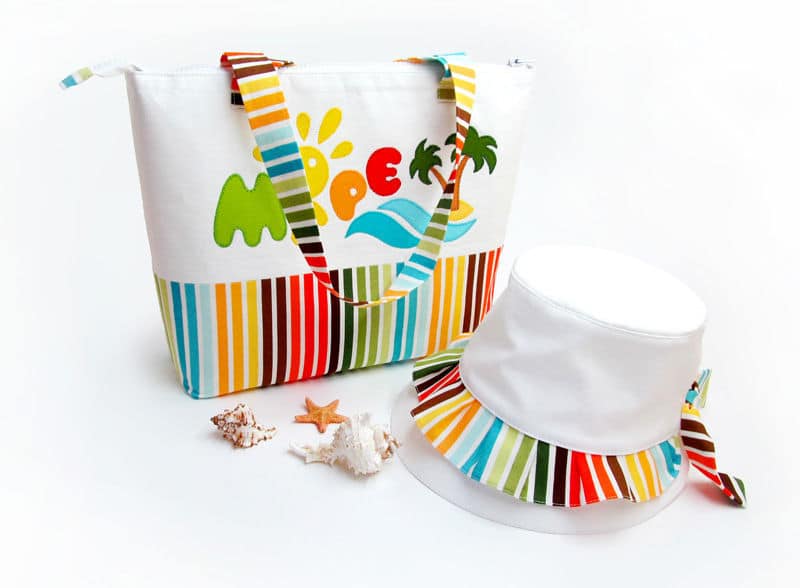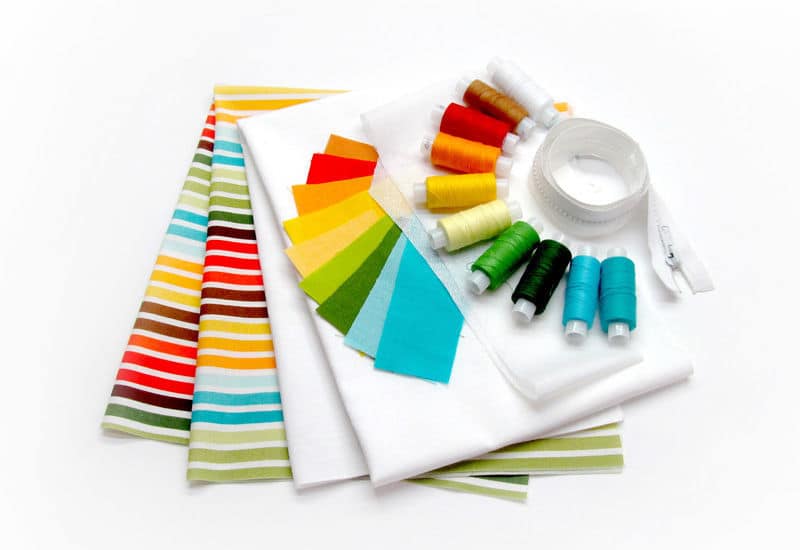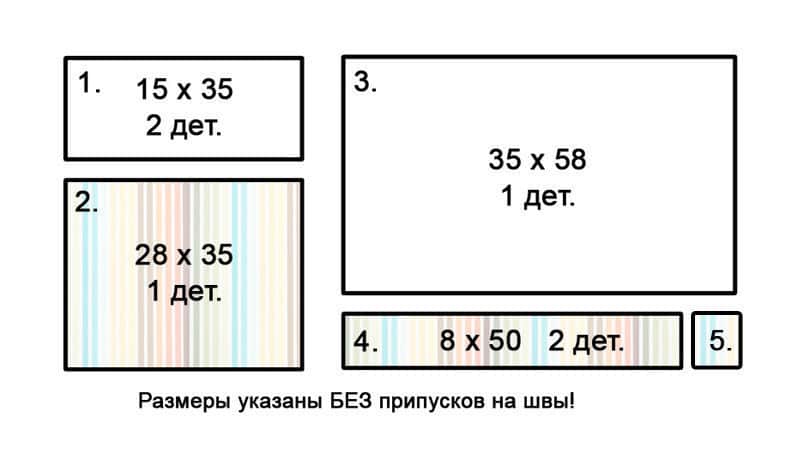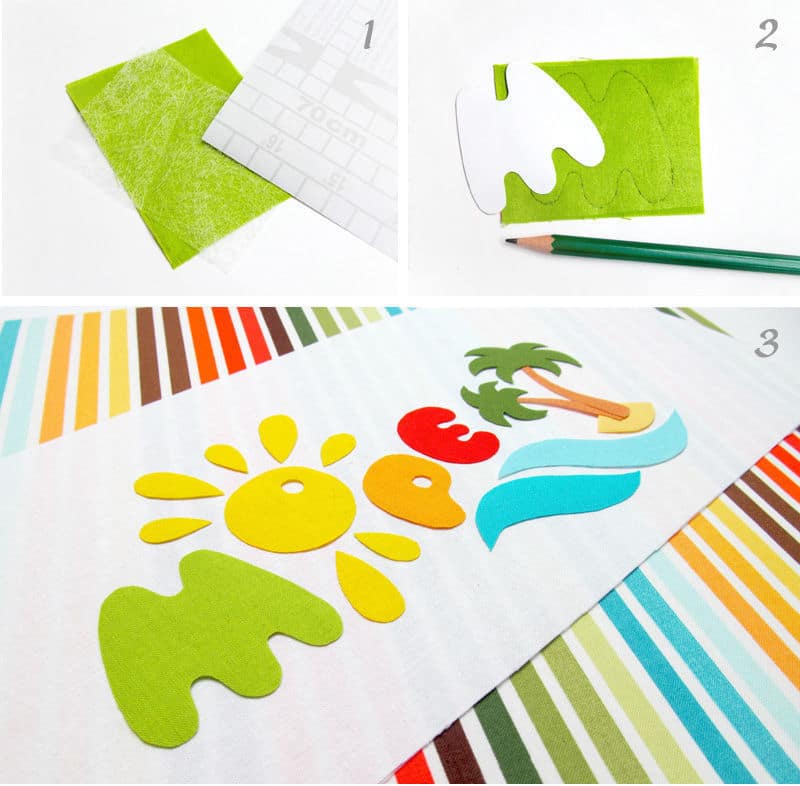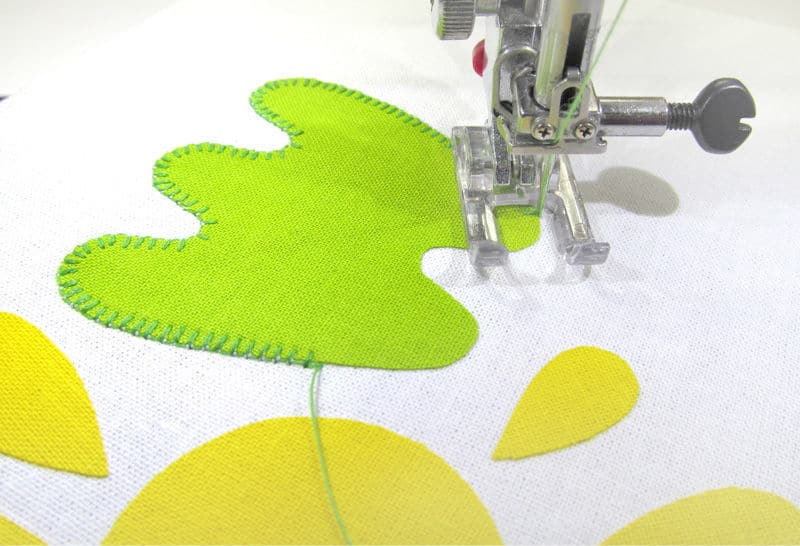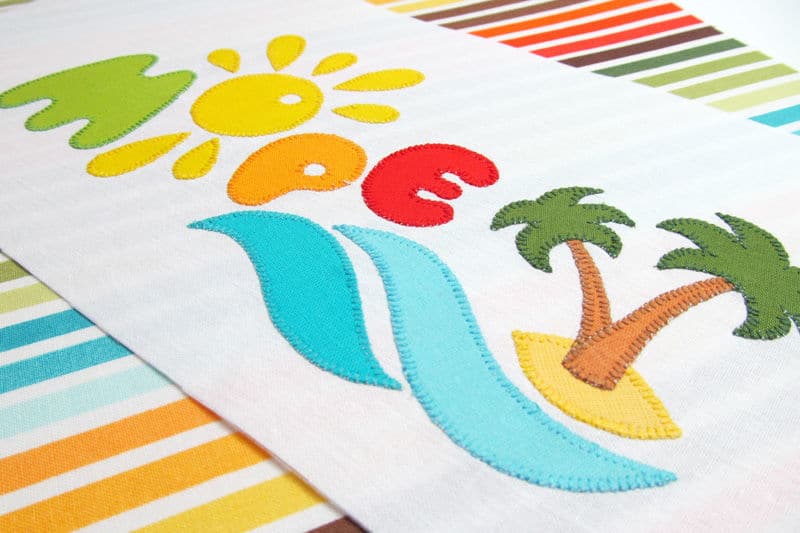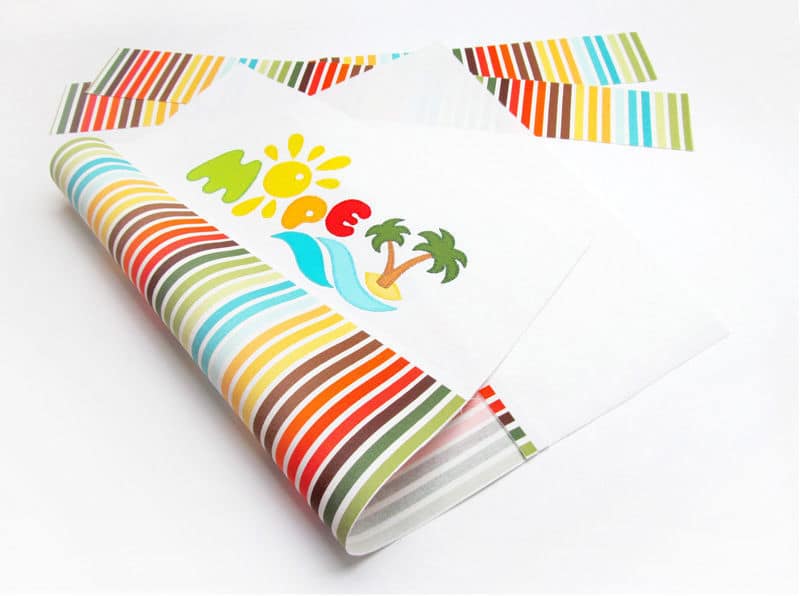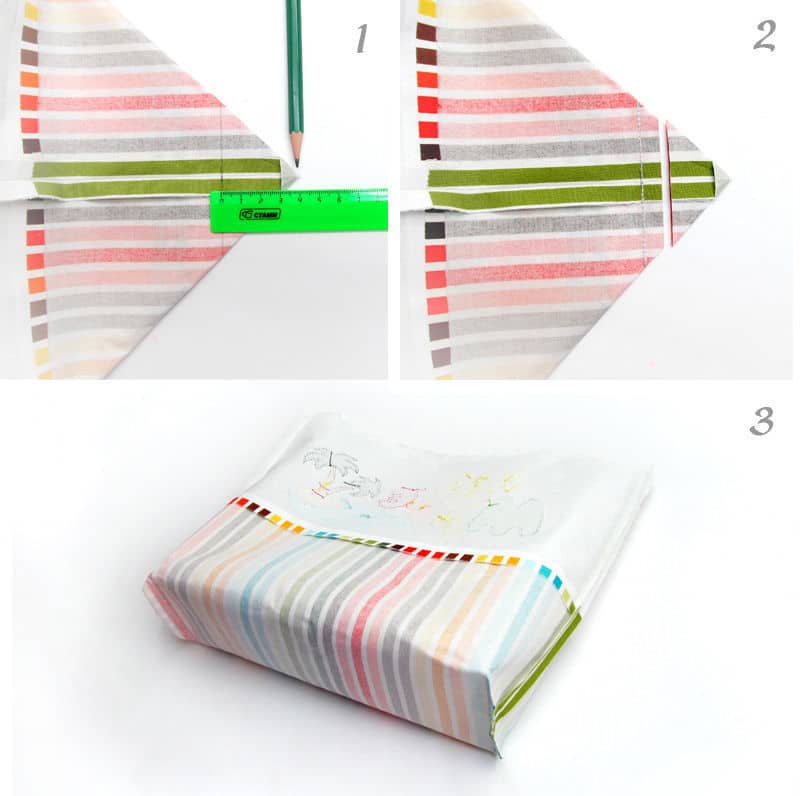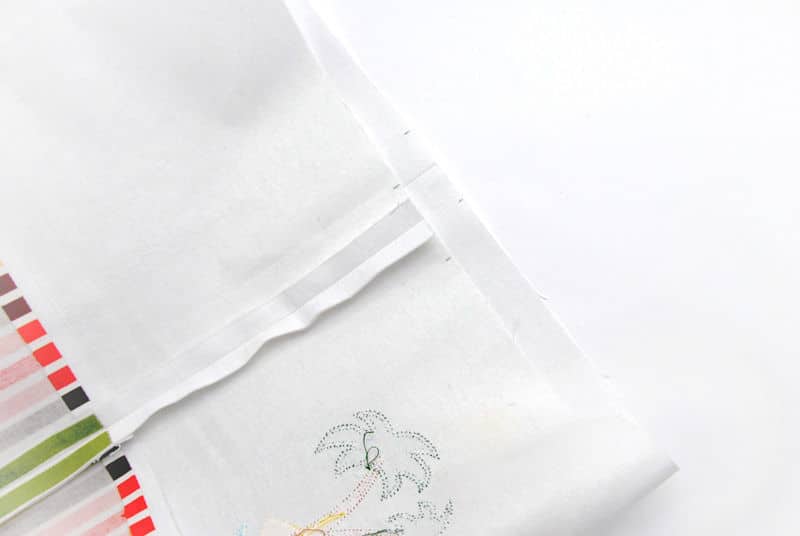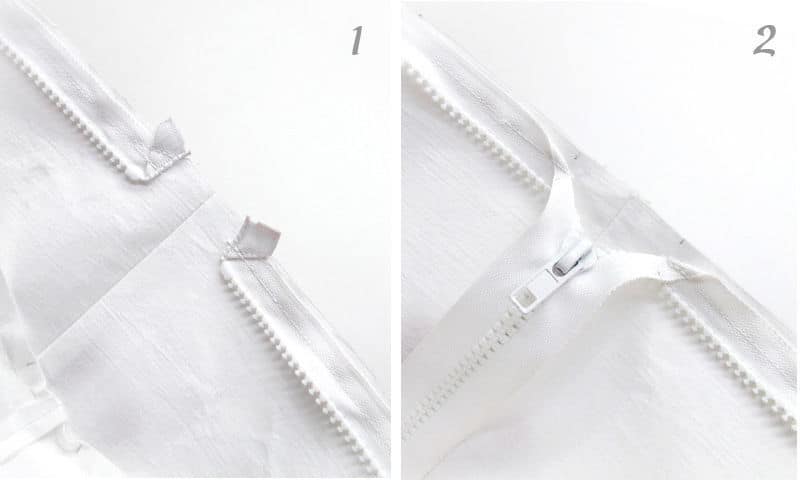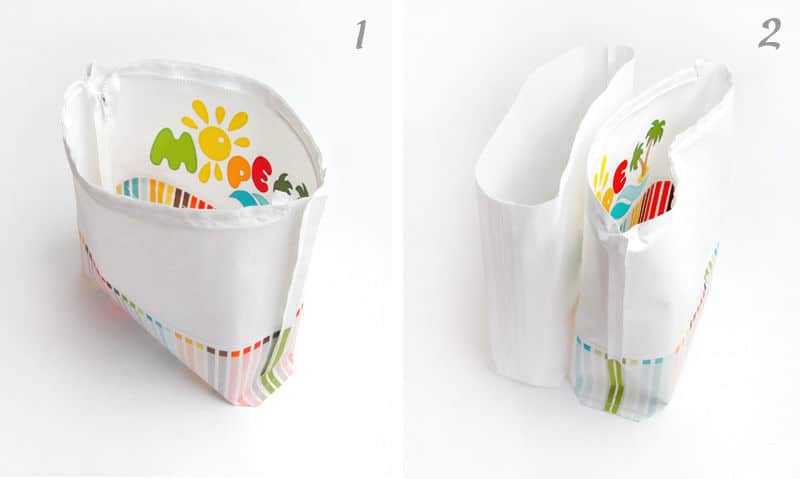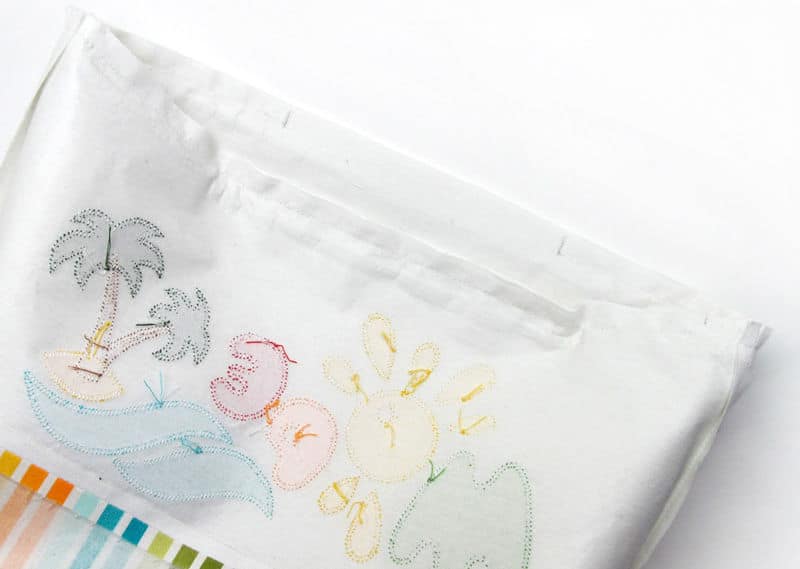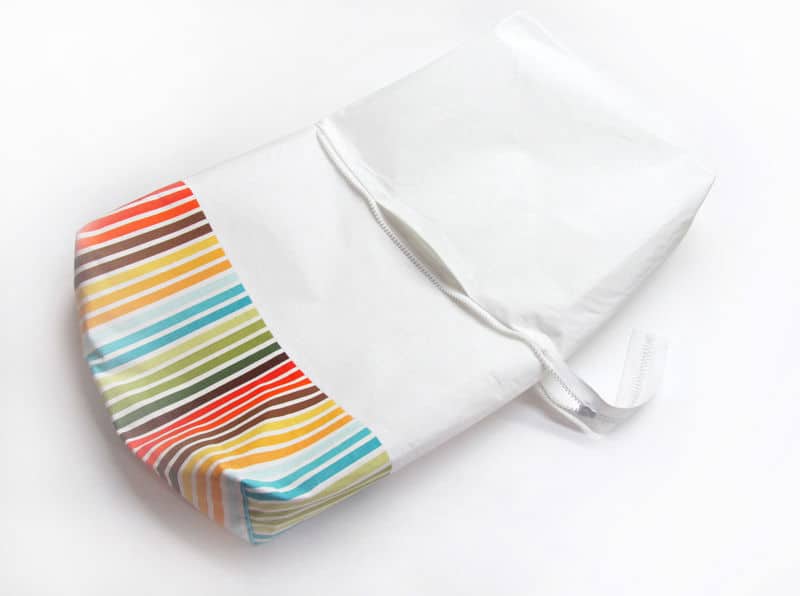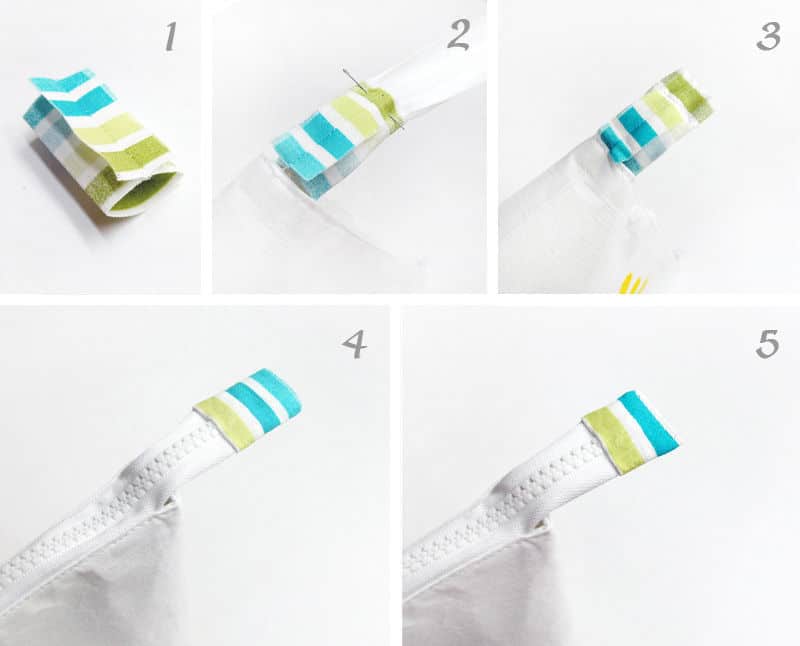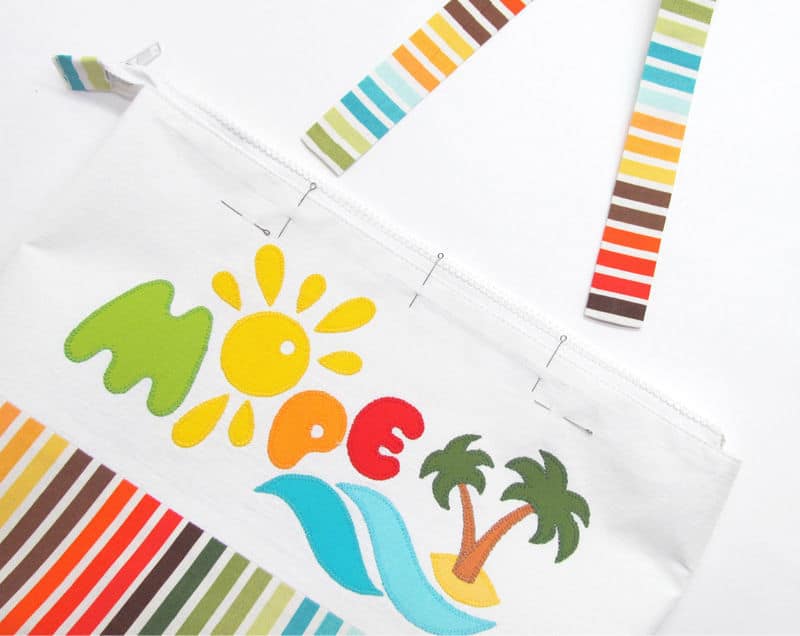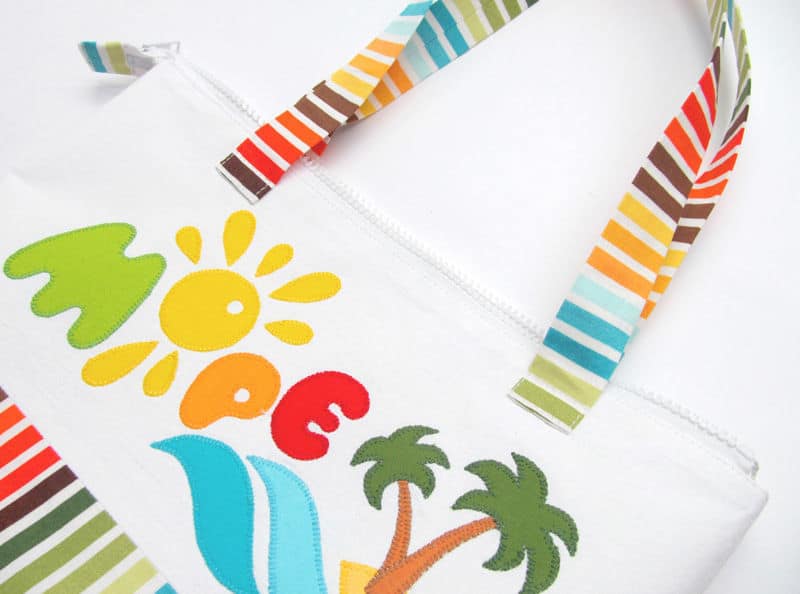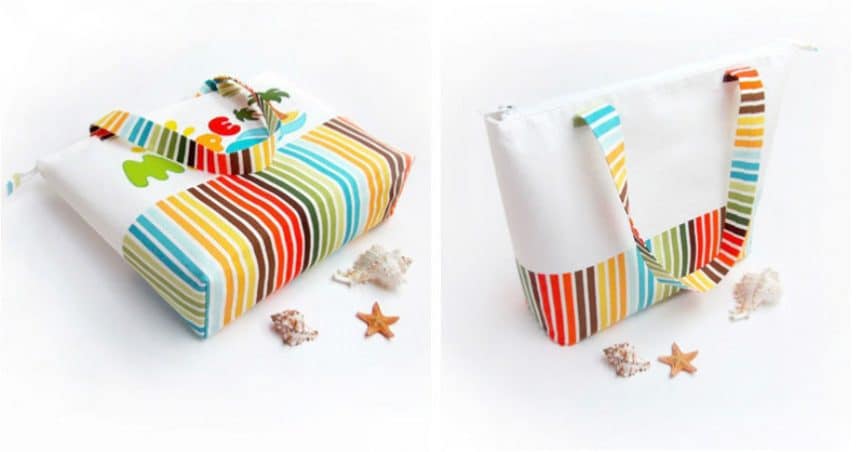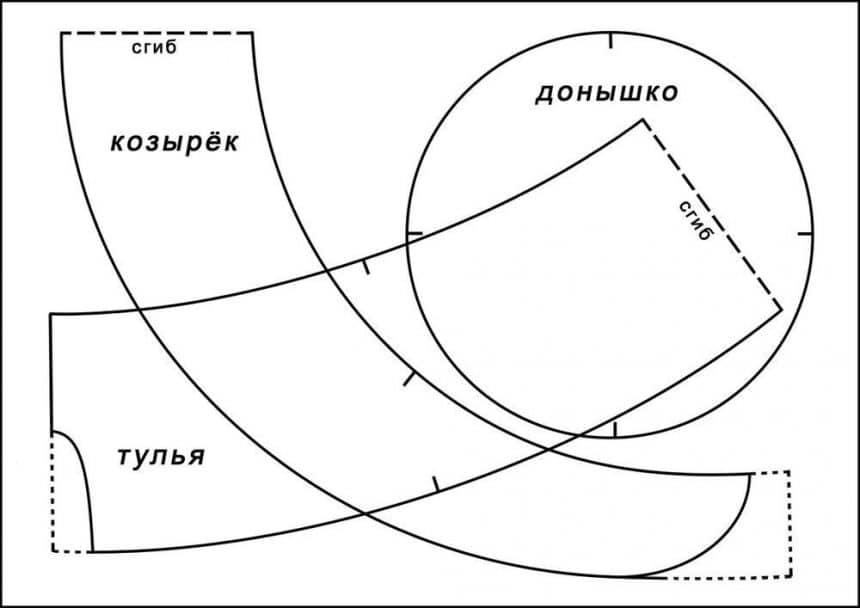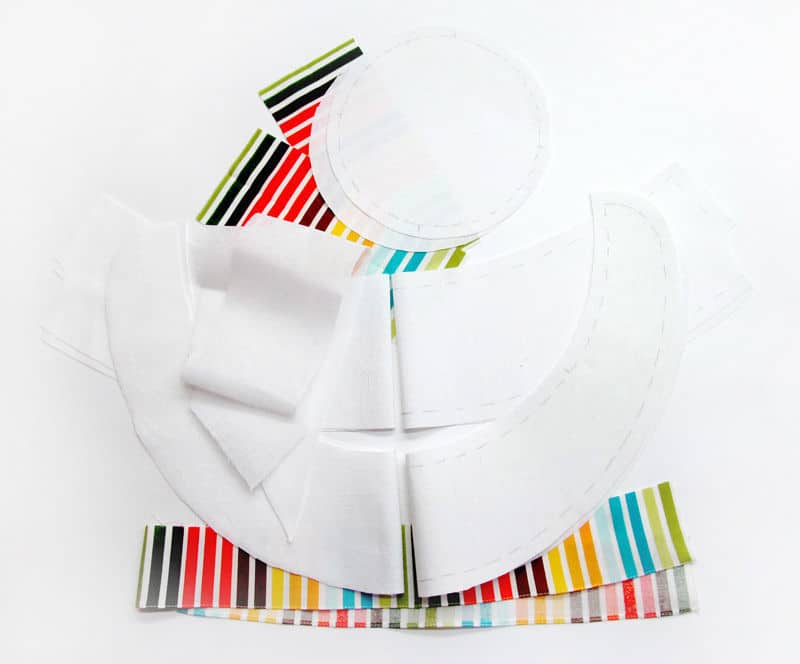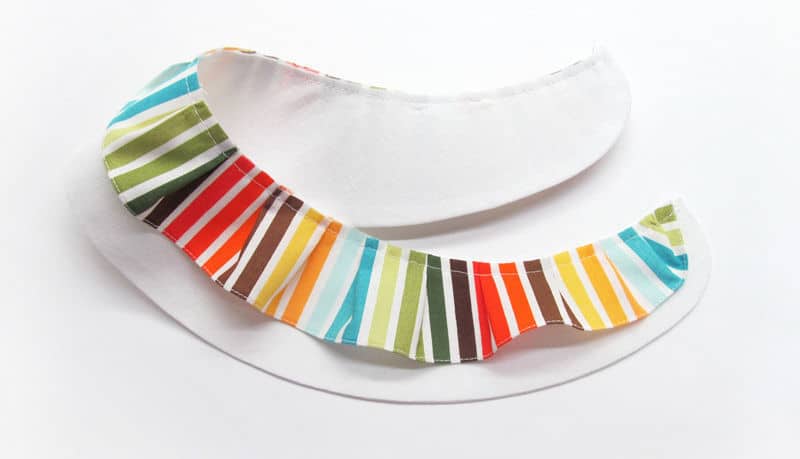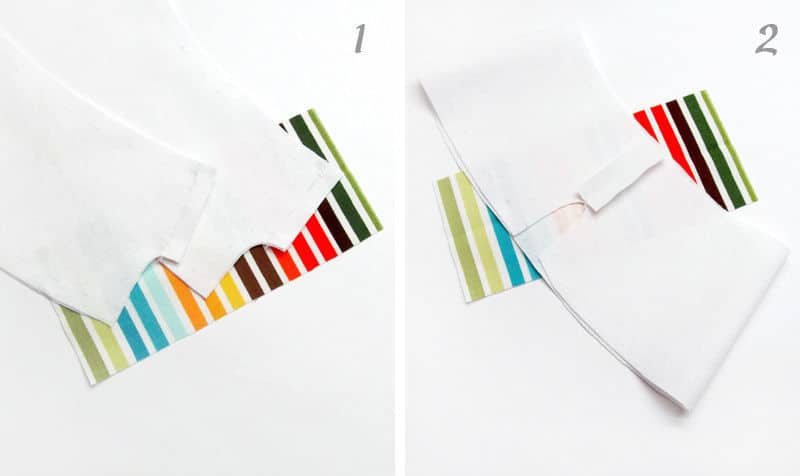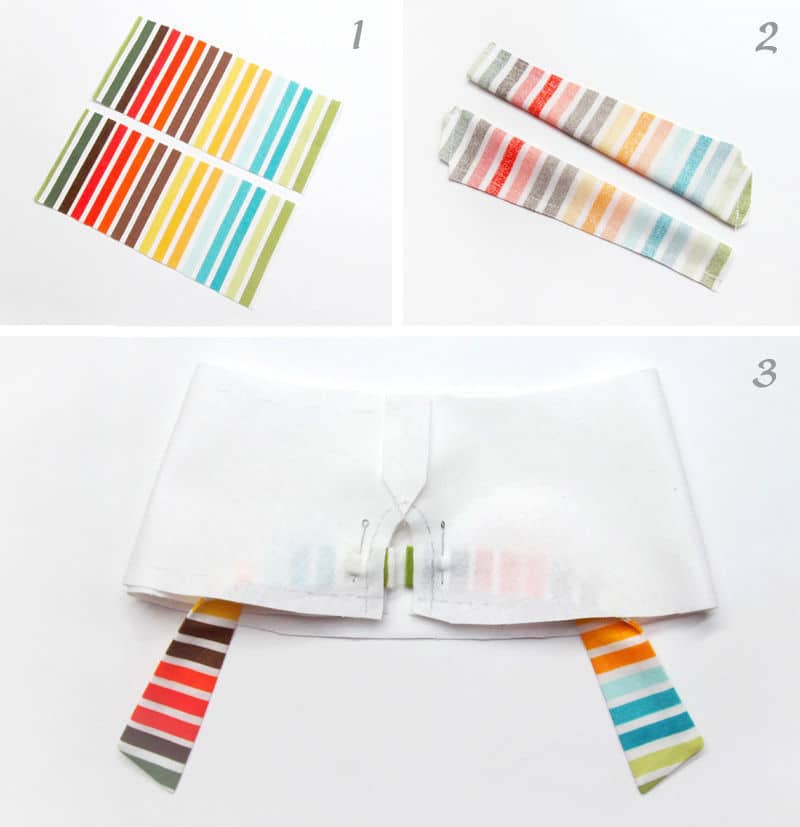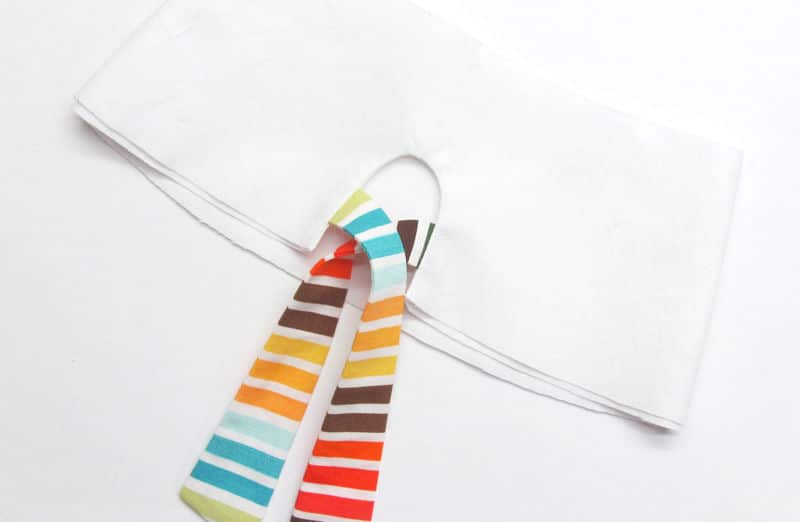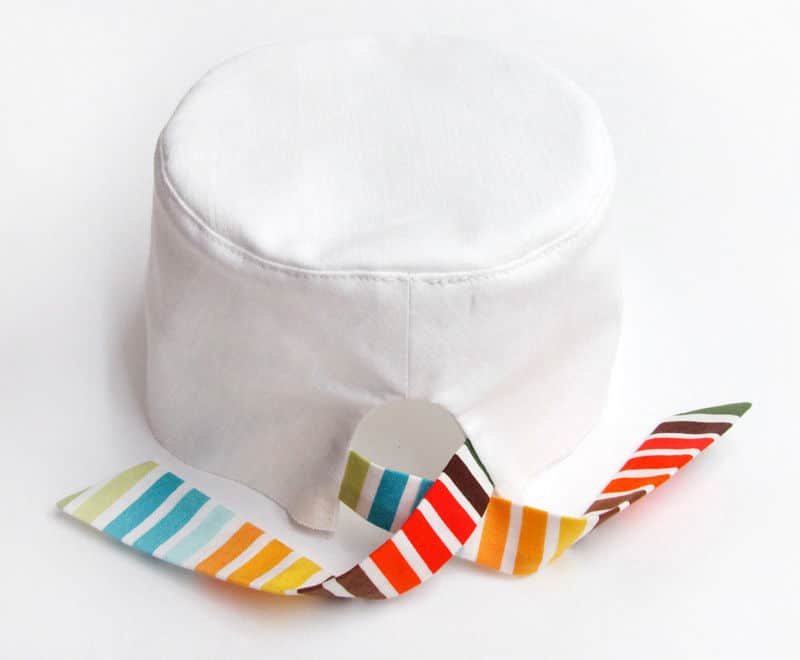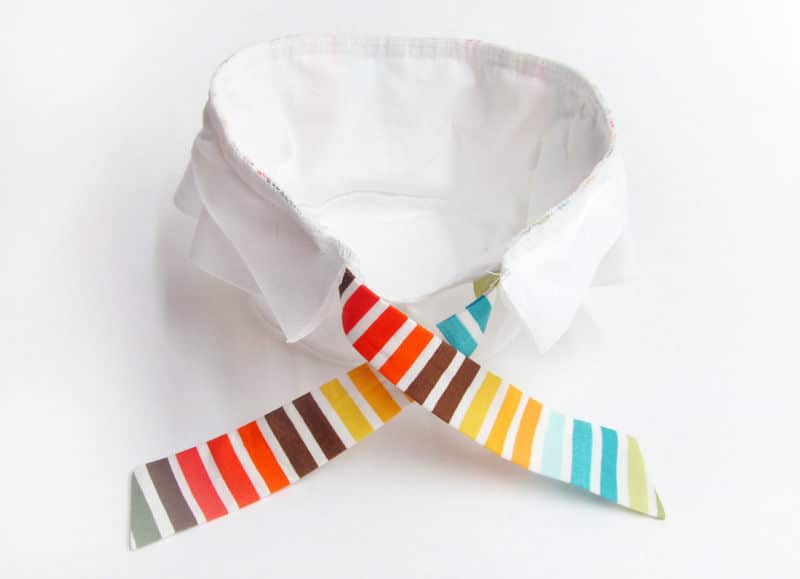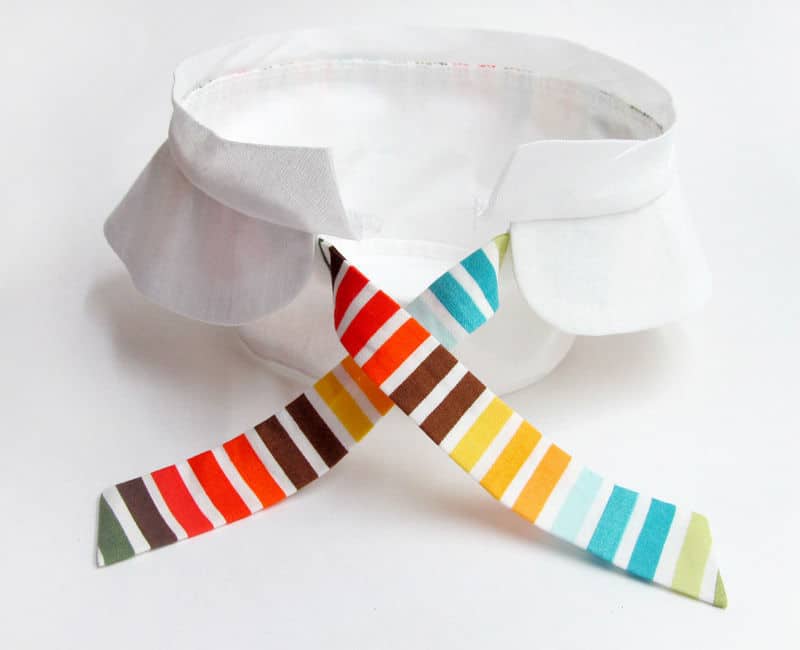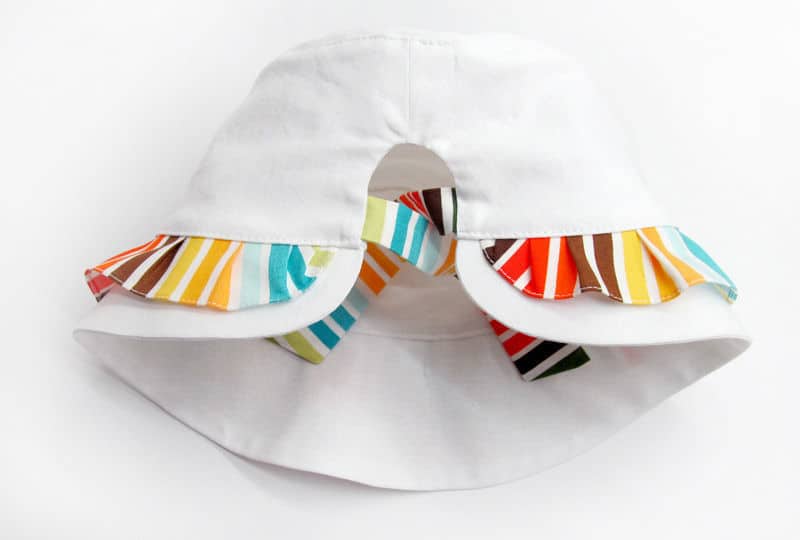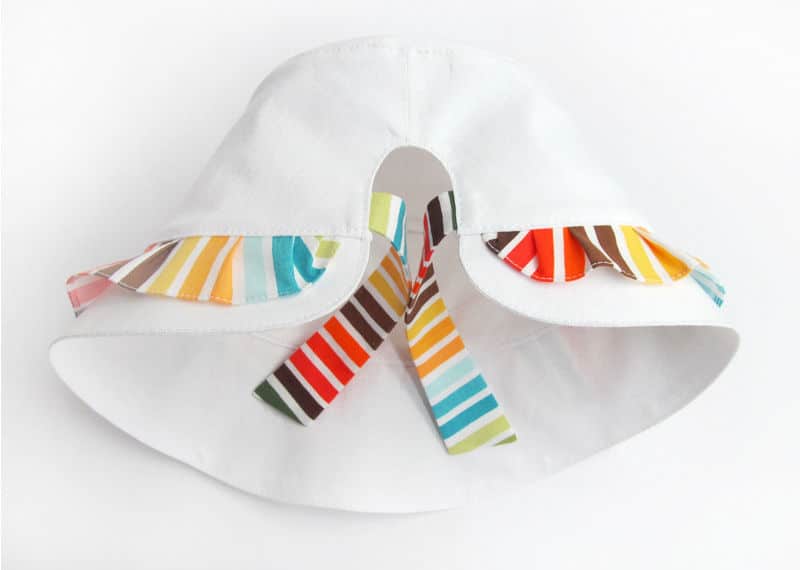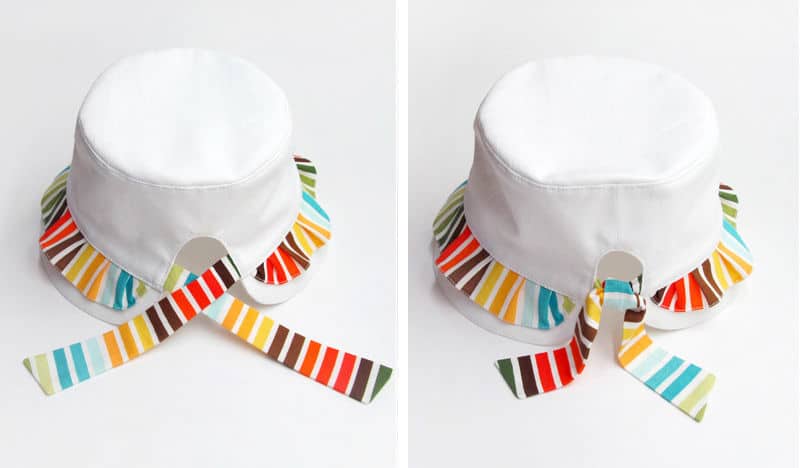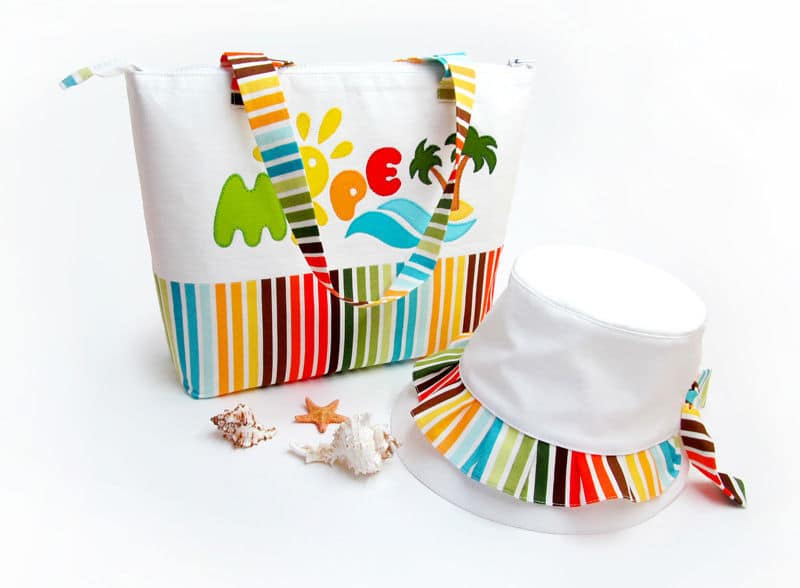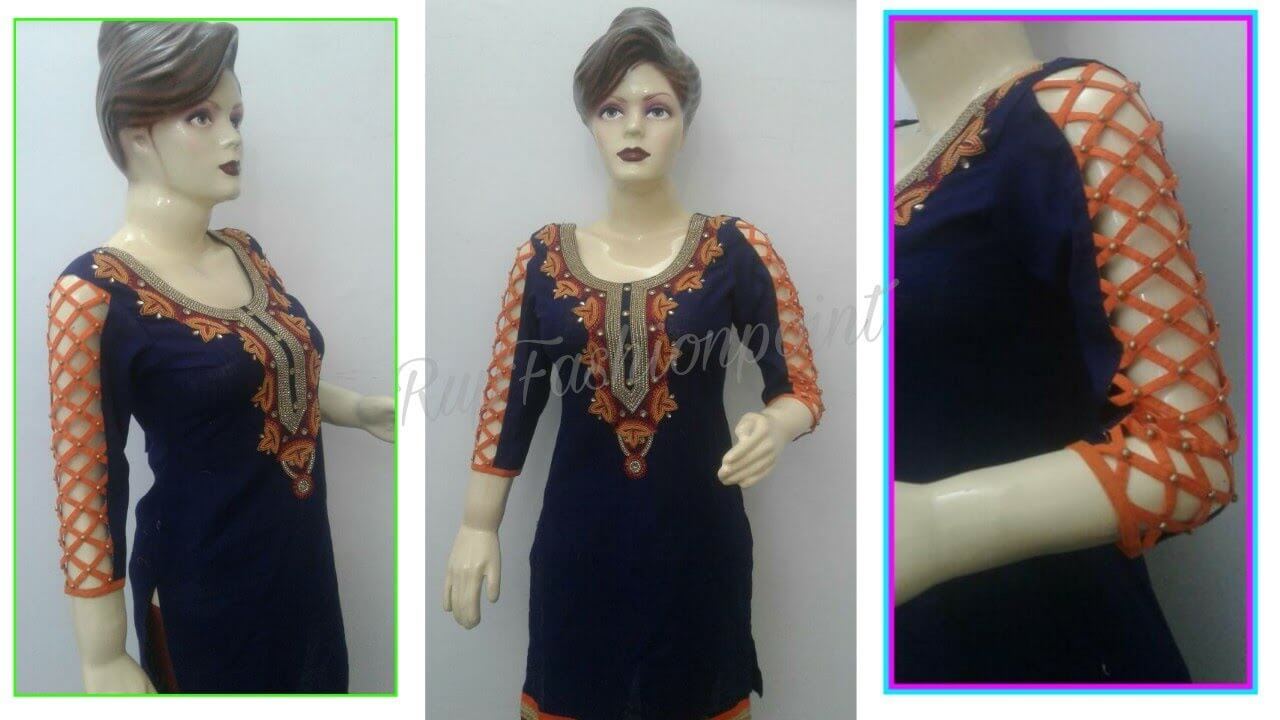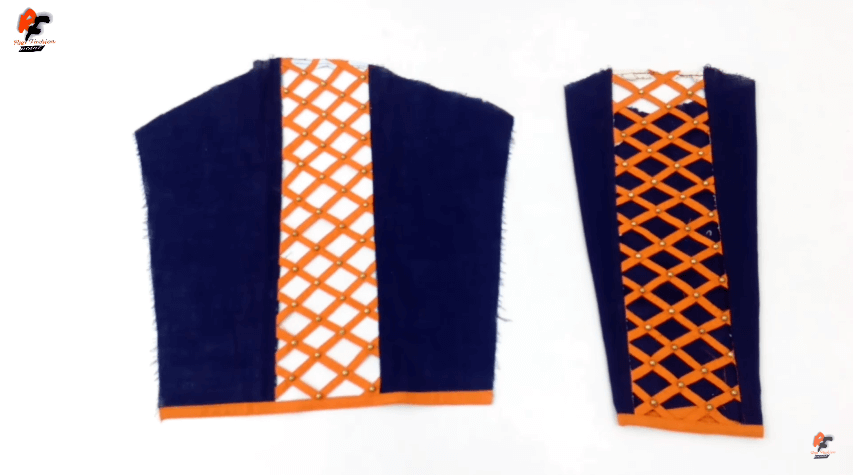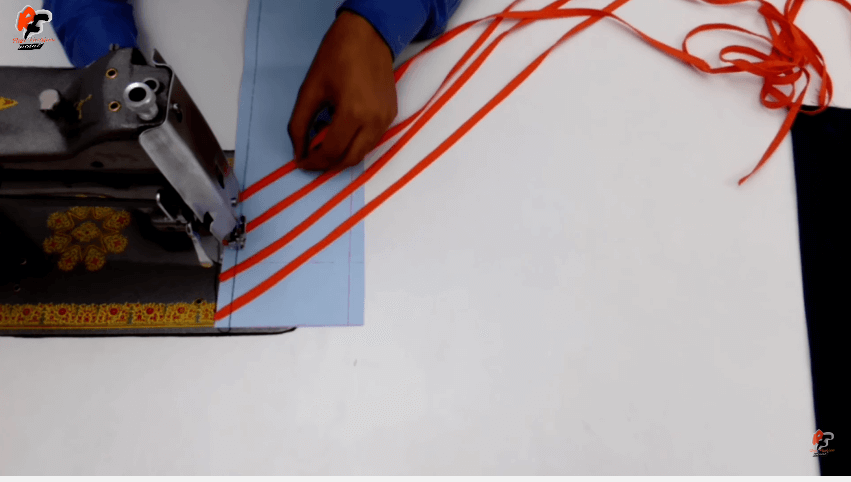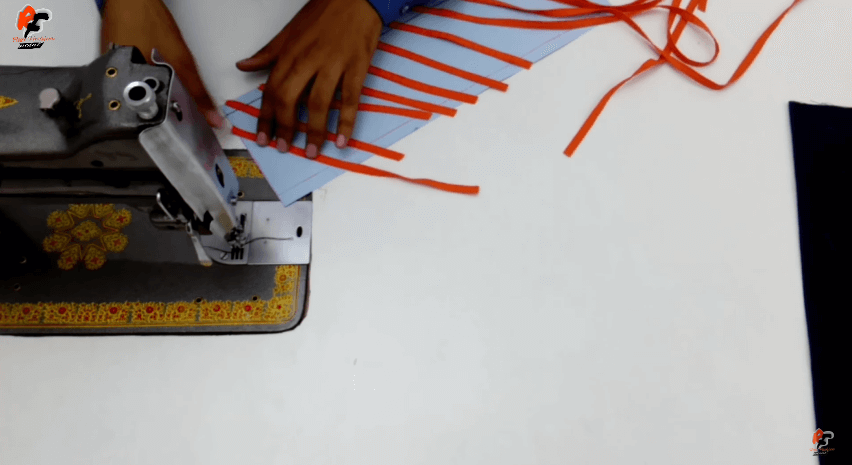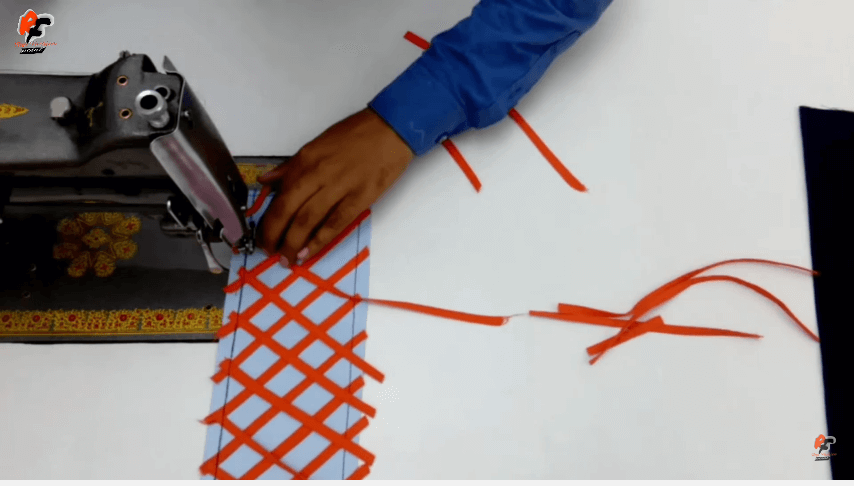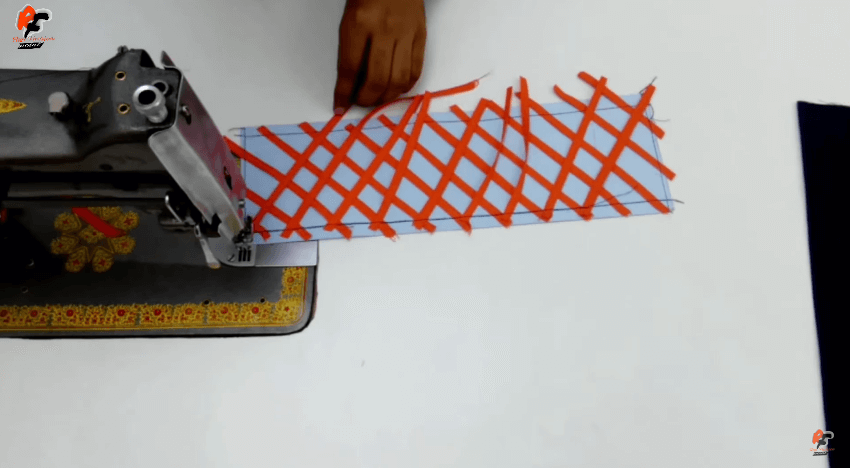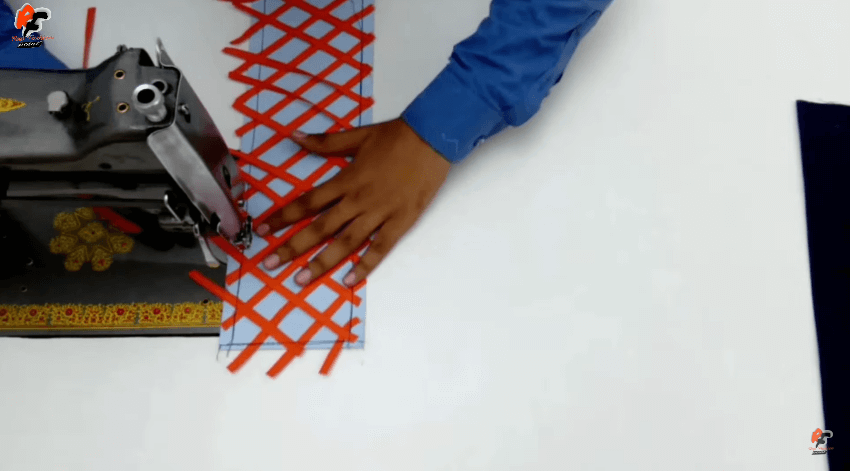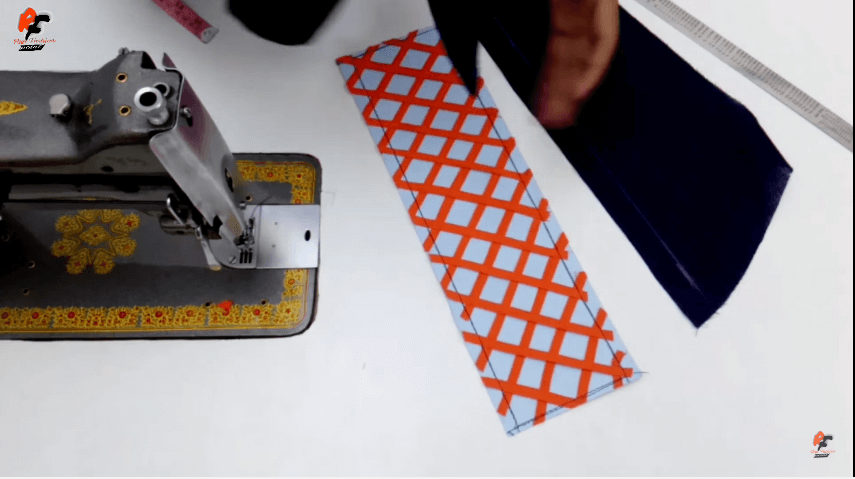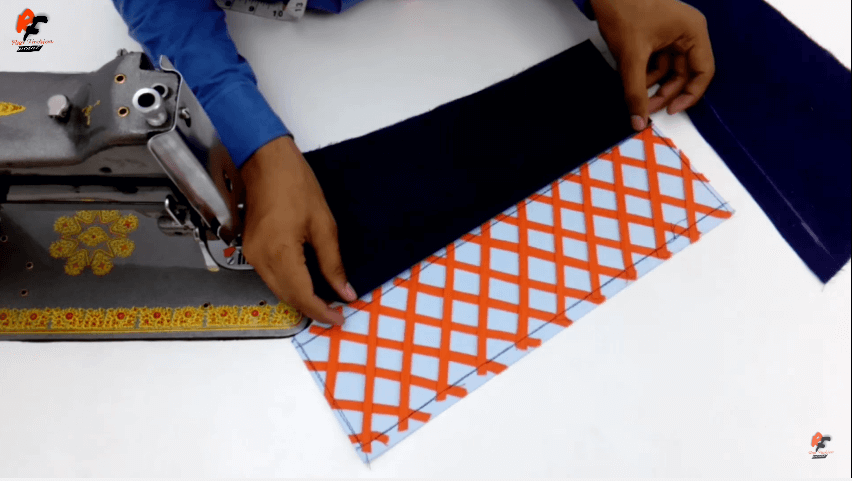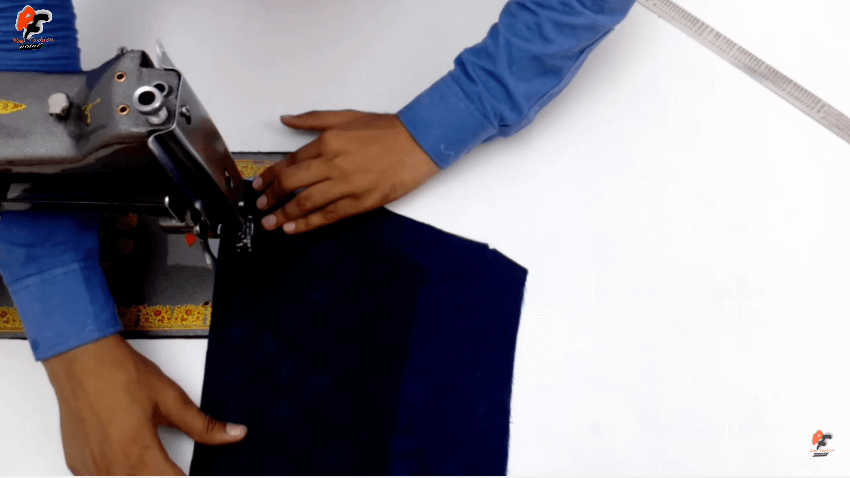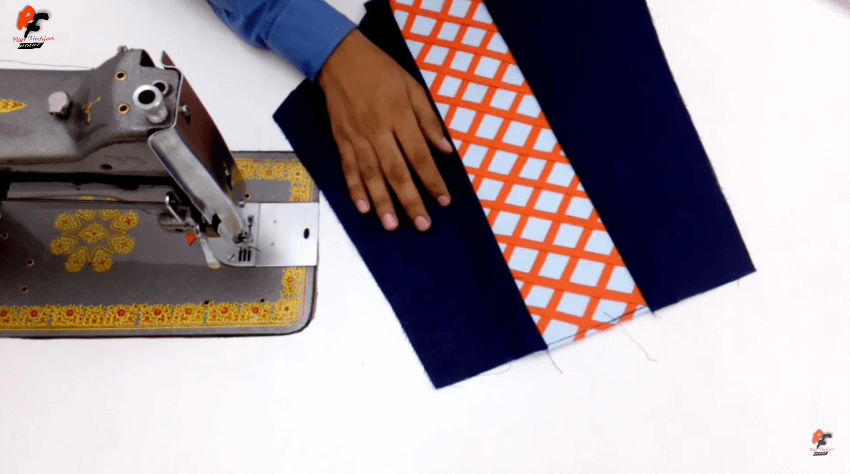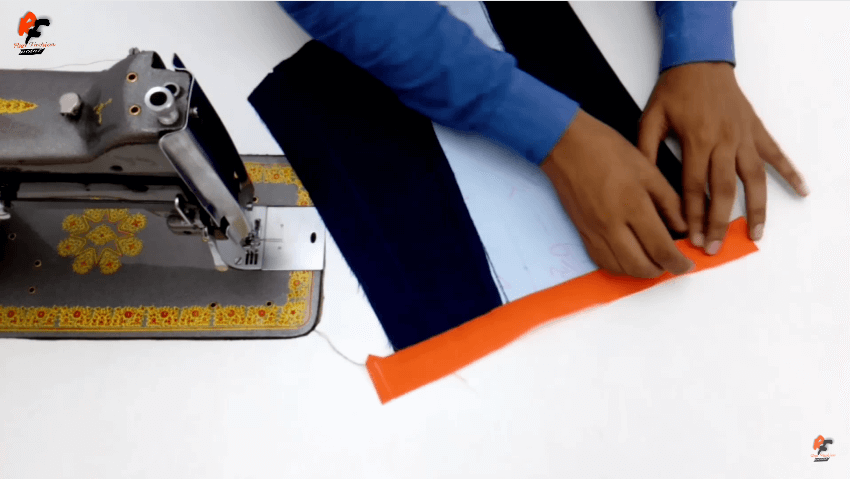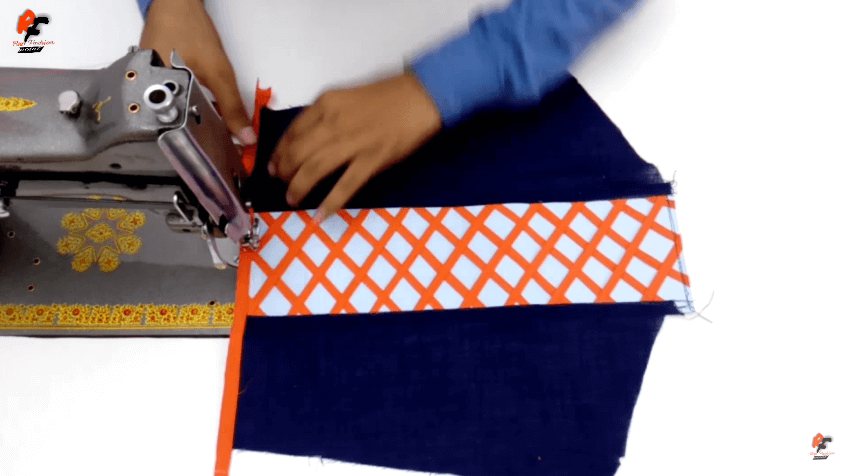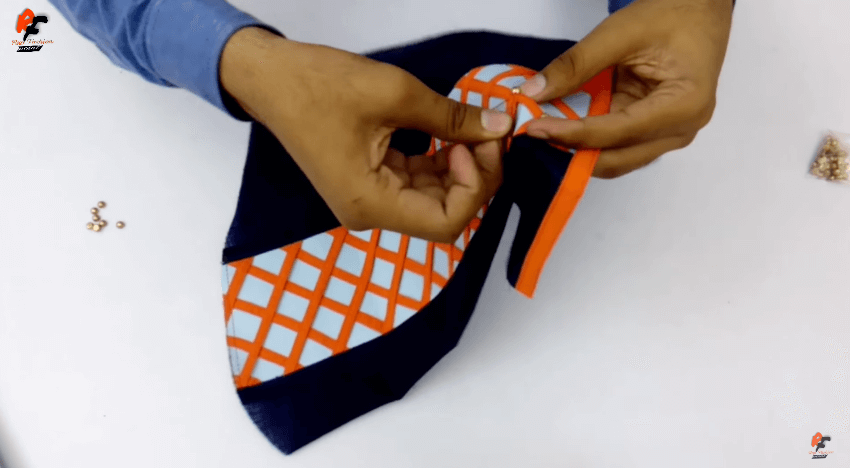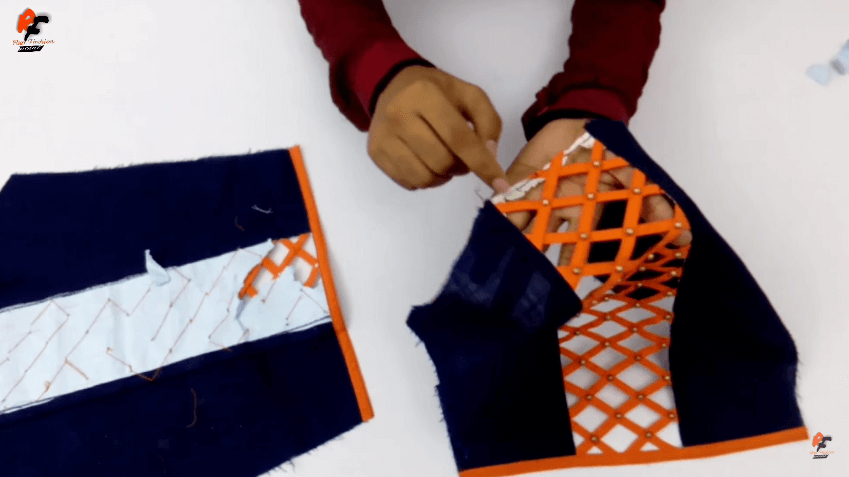This is a simple skirt, which can be made with low to intermediate sewing skills. Total costs: about 15 euros.
I apologize in advance for the poor quality of most of my pictures. My camera had a lot of difficulty with photographing black fabric.
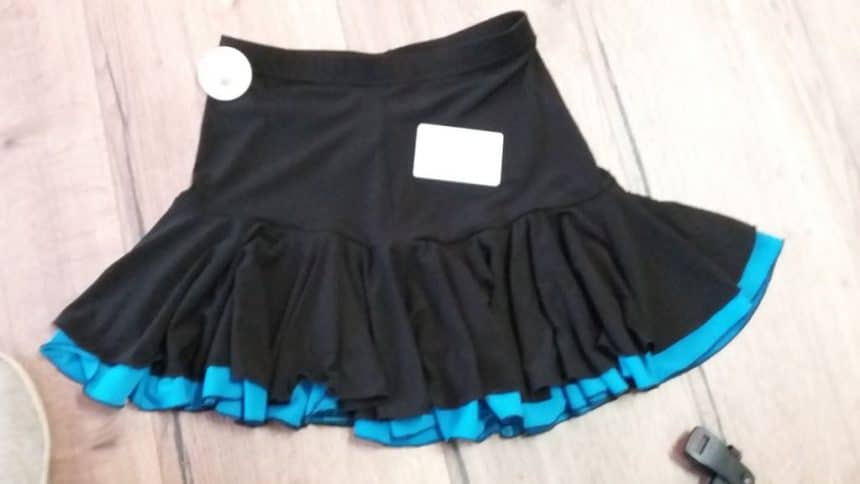 Step 1: The Pattern
Step 1: The Pattern
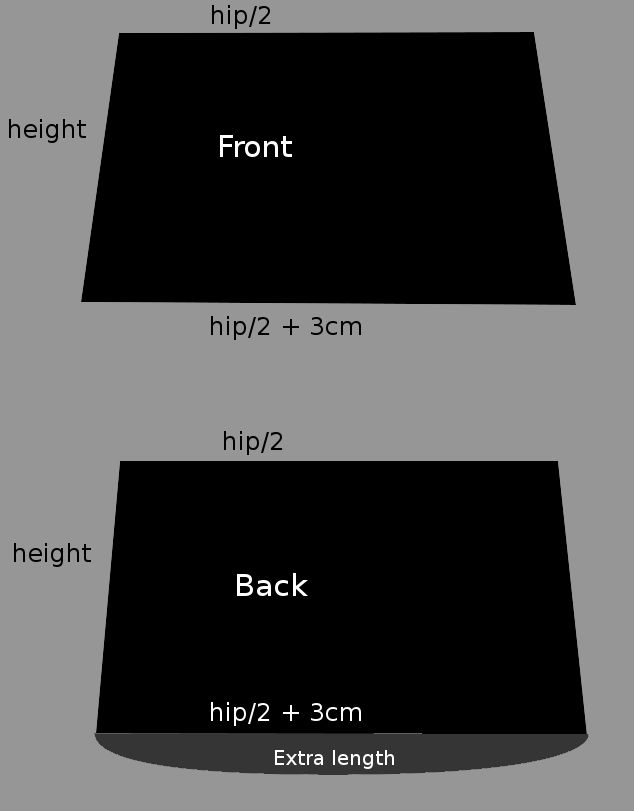
Of course, first, you need to make your pattern. Thankfully, this is super easy. You can use the figure as a guide. So here’s how to make the pattern.
First, you need the hip measurement of the person you’re making the skirt for. My friend is very small and has a hip measurement of 84 cm. Since the skirt is made of lycra which is very stretchy, the actual skirt needs to be smaller. I estimated that a skirt circumference of 70 cm would be OK. I will call this 70 cm the hip measurement from now on. You also need to decide on a total length. Following the example of the skirt in my photo, I chose a total length of about 40 cm. Note that this pattern does not include seam allowances.
The skirt consists of two parts. Two trapezoids at the top, which I will call the base, and a wide, hanging part, which is made from four circles, which I will call the frill.
The base consists of two trapezoids, where the back part has a bit of extra fabric at the bottom. This is in place to make sure that the bum of the dancer stays hidden while dancing. The top width of the pieces is hip/2 ( =35 cm), and the height is the total length/2 ( =20 cm). The extra length is about 5 cm, depending on the bum of the wearer. The bottom of the trapezoids is a bit (about 3 cm for each panel) wider than the top edge. This will stop the skirt from riding up.
The frill is made out of four circles, with a circle cut out of the center, as shown in the figure. The black circles need to be a bit smaller than the blue ones, but they must have the same inner radius since the inner edge will connect to the base. The inner circumference of each circle (c0) must be 1/2 of the hip measurement. This means that the inner radius (r0) must be r0 = c0/(4π) = c0/12.6. So for me, r0 = 5.6 cm. The radius of the blue fabric needs to be 20 cm longer, so r2 = 25.6 cm. The black fabric must be 3 cm shorter, so r1 = 22.6 cm.
Step 2: The Fabric
It is easiest to draw a rough sketch to get an idea of how much fabric you will need. Key point: do not confuse radii and diameters! If you make a skirt with the same sizes as me, then you should have plenty if you get 60 cm of blue (at 140 cm Wide) and 1 m of black. I got 1 m of both.
I got a light quality lycra. Try to get the blackest black you can, and a color that really pops for the lower layer. Bright green, red, or even a glittering fabric would be really cool. It’s an accent, make it stand out!
There is a lot of lycra available online, but in the end, I got it at my local fabric market. I prefer to see and feel my fabric, so there are no surprises in the thickness, color, and quality.
Step 3: Drawing
You will need a piece of dressmaker’s chalk, a cup of water, and a lot of pins and patience. Lycra is slippery, which makes is tricky to work with. If you dip the edge of the chalk in water before drawing a line, it will release a lot more chalk, making the drawing easier.
My lycra is reasonably thin because I wanted the frill to be light. Due to this, I decided to make my base out of two layers. So draw both pieces of the base twice, or once on folded fabric. If you work on folded fabric, you need to pin the two layers together, as shown in the picture.
You will also need two circles of each color, with the right radio (black smaller than blue). I did this by drawing a dot at the place where I wanted my circle, and moving my tape-measure around that dot to draw a circle, as shown in the figure. Also, draw the inner circle with radius r0.
Cut all the pieces (2x front panel, 2x back panel, 2 black circles, and 2 blue circles). Leave a 1 cm seam allowance around the base. Do not leave seam allowance around the inner edge of the circles, or the circumference will be too small. Instead, leave a small allowance around the outer edge. Lycra will not fray, so you will not need to hem the outer edge frill. Cut a straight line from the outer edge of the circles to the center. The figure shows the pieces you now have.
Step 4: Making the Base and the Frill
Sew the front pieces of the base to the back pieces, good sides together. I used an overlock machine with the most stretchy stitch. If you are using a regular sewing machine, make sure you are using a stretch needle and a stretch stitch. Sew the pieces together.
Now turn one of the two bases right side out, and put it inside the other one, so all the good sides are touching. Sew around the top edge to close it off, and turn the good sides outward. Now only the lowest edge of the base is bare, and the edges of the top and sides are neatly tucked away.
For the frill: Put the good sides of both colors together and sew the cut edge as shown. Lay them on top of each other, with both bad sides facing down (good side to bad side). Pin them securely together.
Step 5: Putting It Together
Now comes a lot of pinning. Fold the two layers of the base inward, and lay the top edge (or inner edge) between them, as shown in the closeup. Do not be stingy with pins, this will help a lot. With rough stitches, hand bastes it all together. Like I said, lycra is slippery, and this is a place where the stability of the basting will be a big help.
Using a regular sewing machine and a stretchy stitch, sew they base and the grill together.
And that’s it! You’re done. You made yourself a beautiful skirt.
Step 6: Look at Her Shine!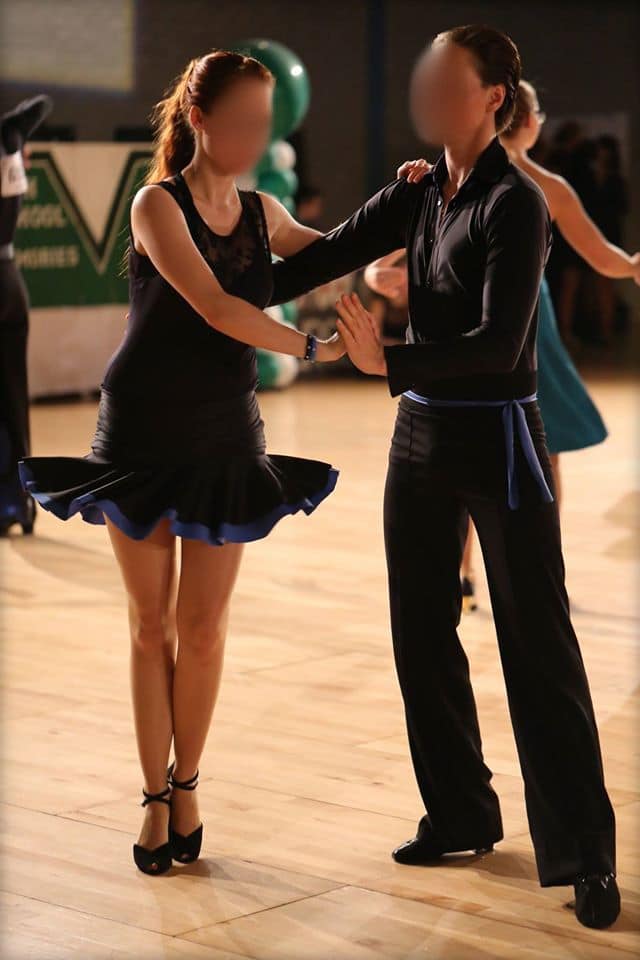
I’m happy with the result, and my friend is even happier. She’s a wonderful dancer, and the skirt enhances it. Her dancing partner modeled an accent for his own outfit from the scrap of blue that was left over.
Thanks!
courtesy: Frivolica
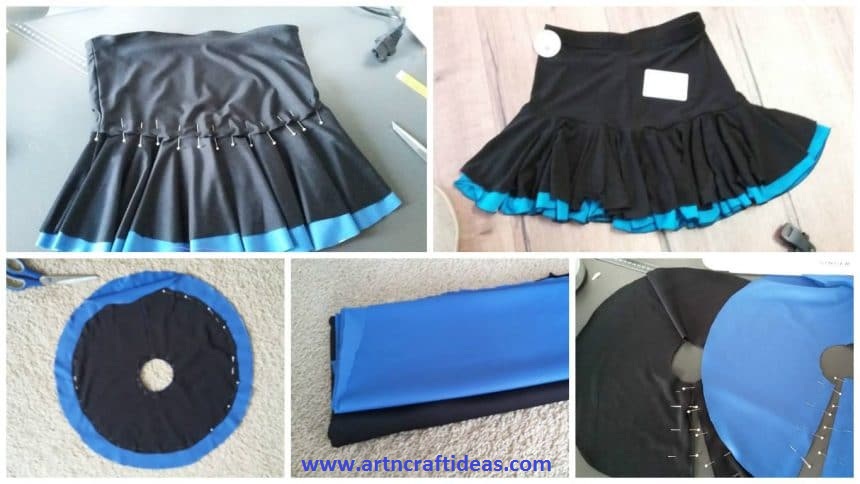
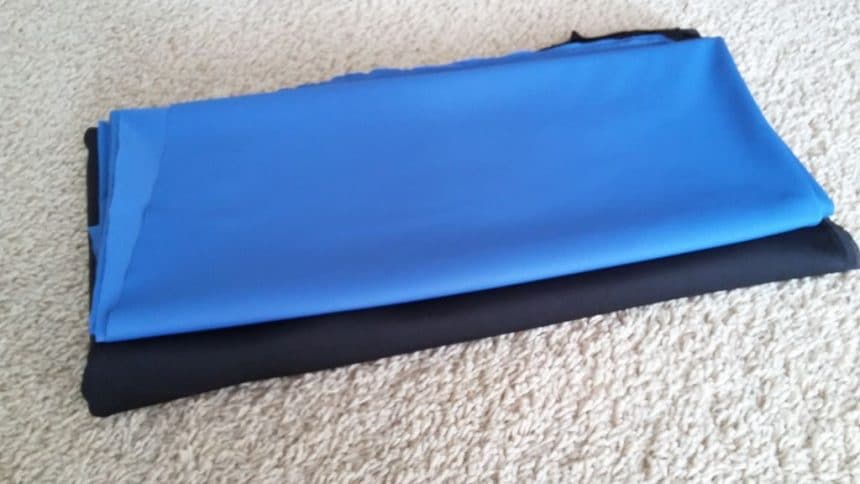
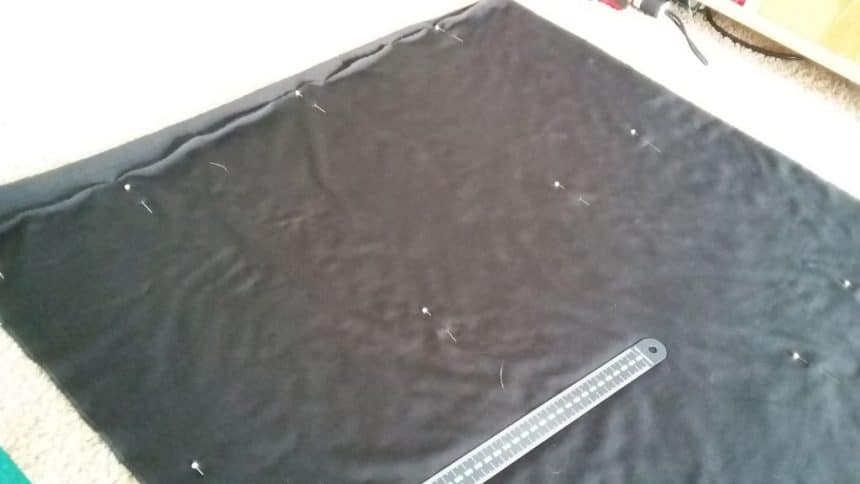
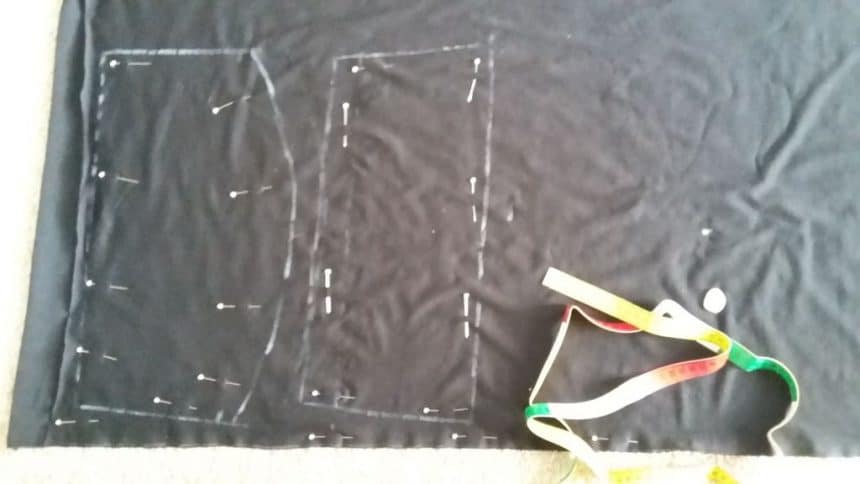
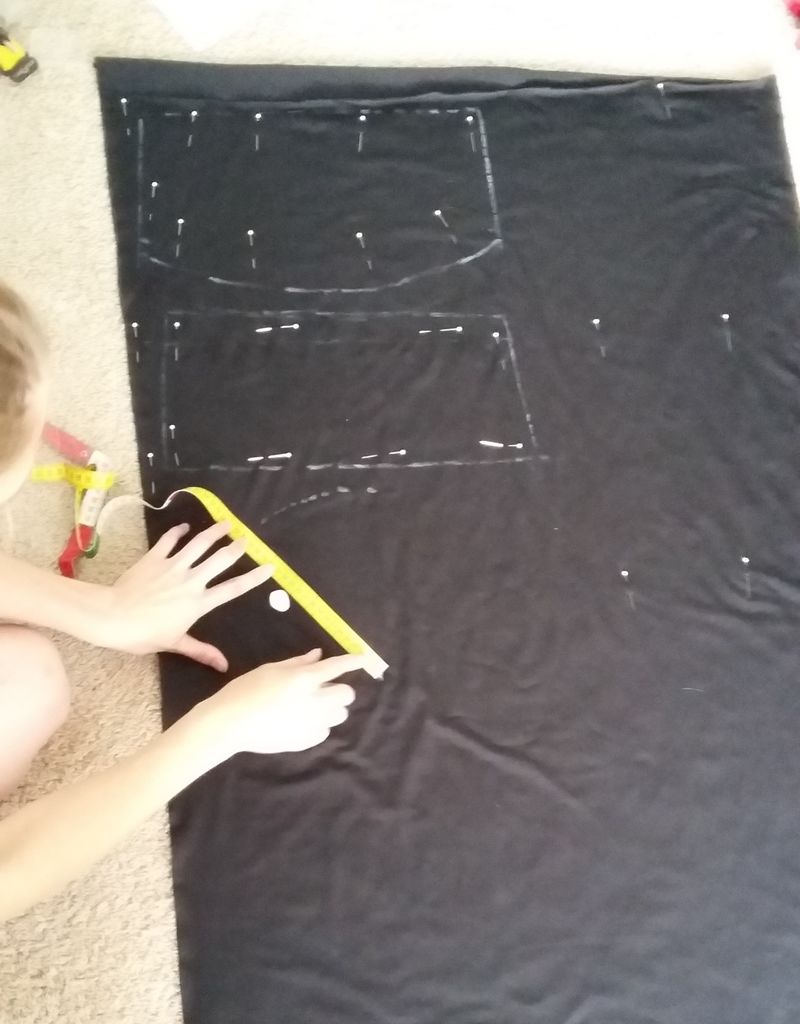


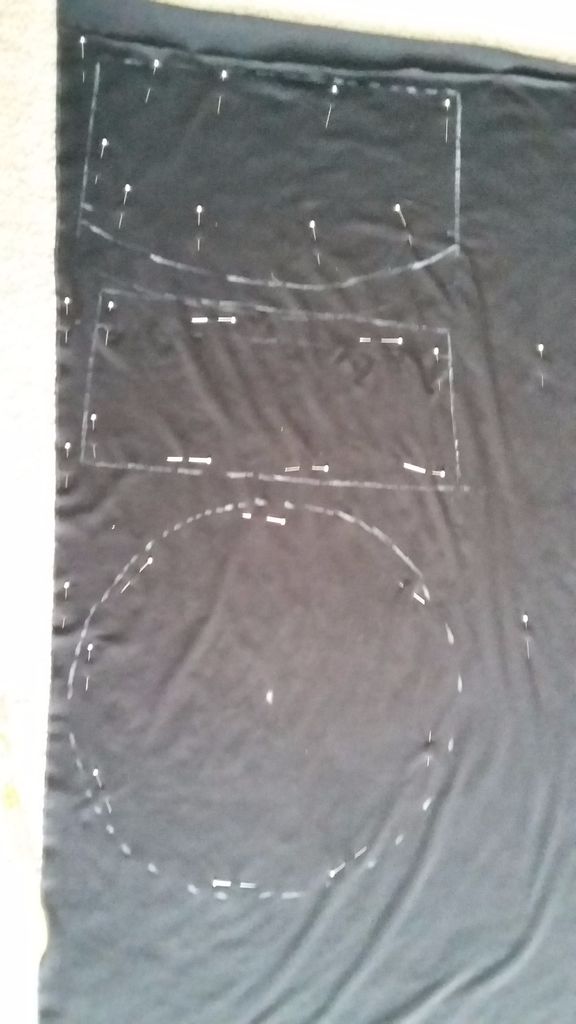
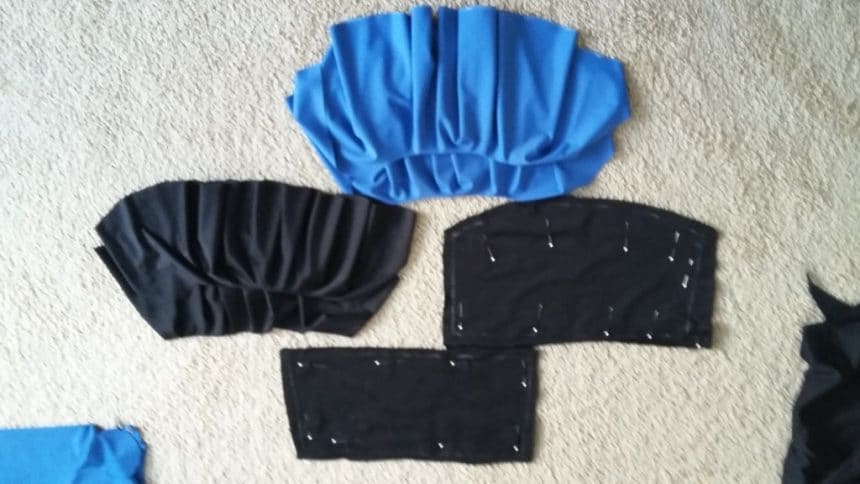
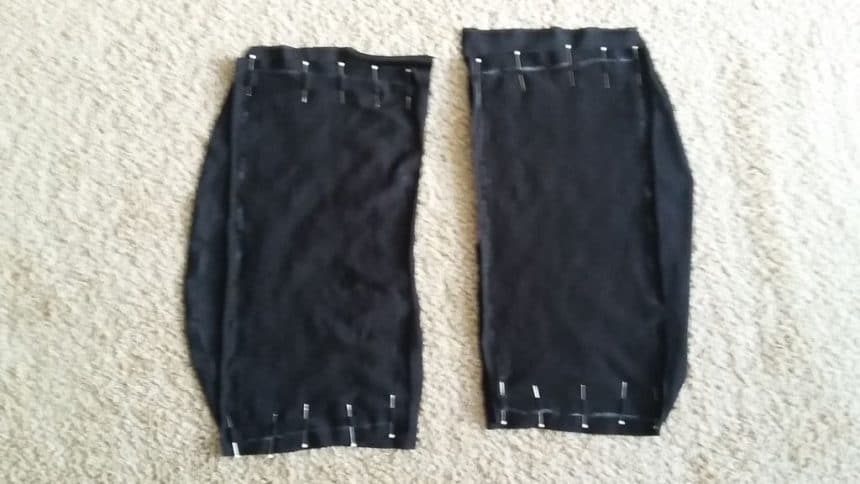
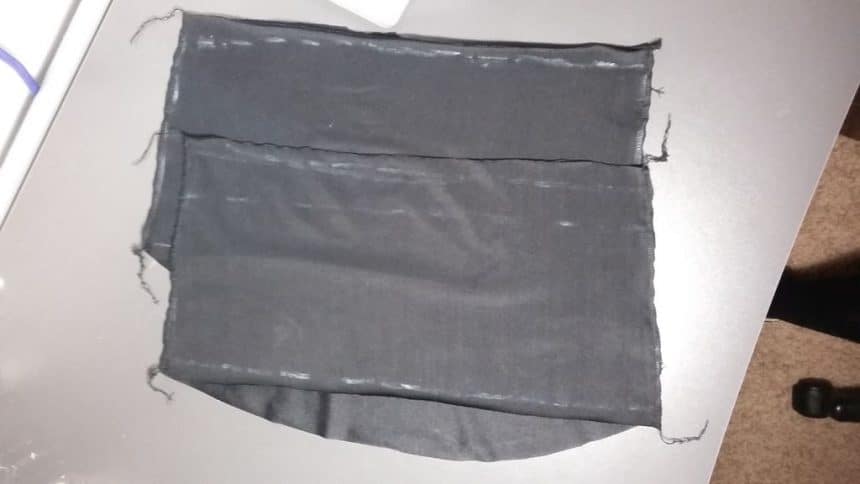
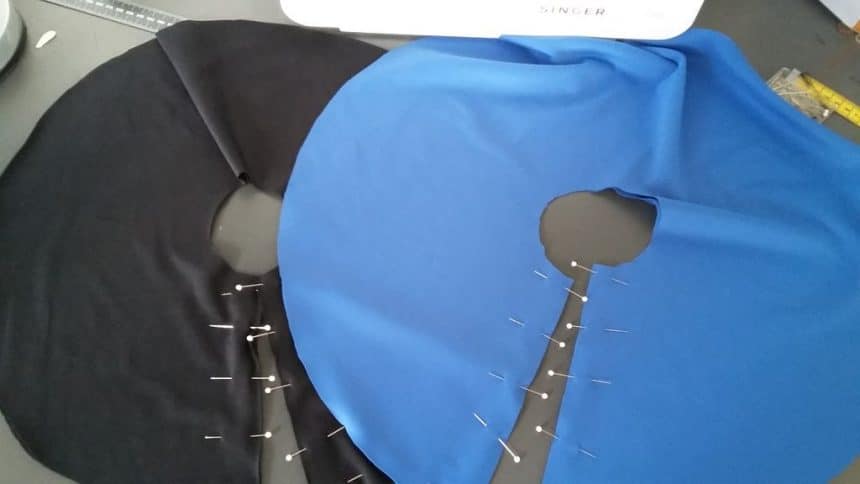


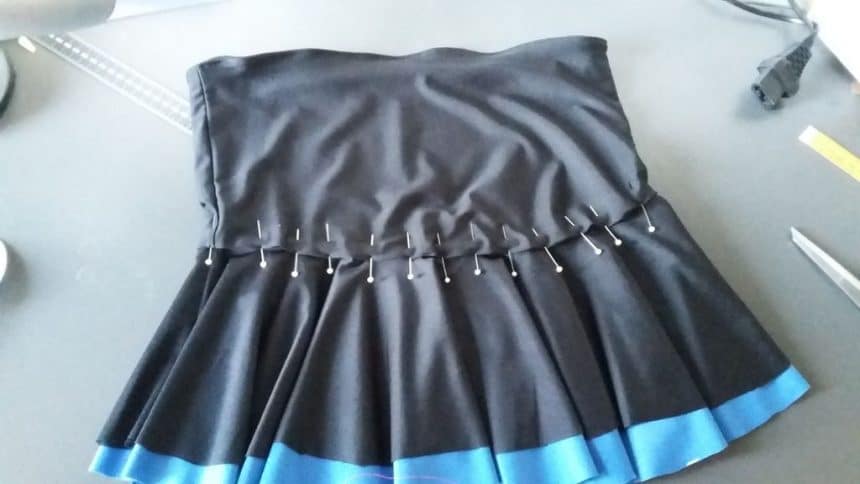
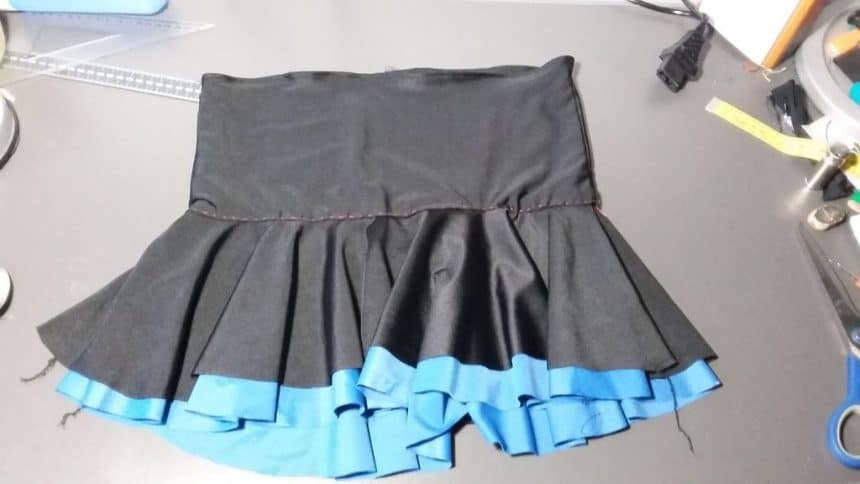
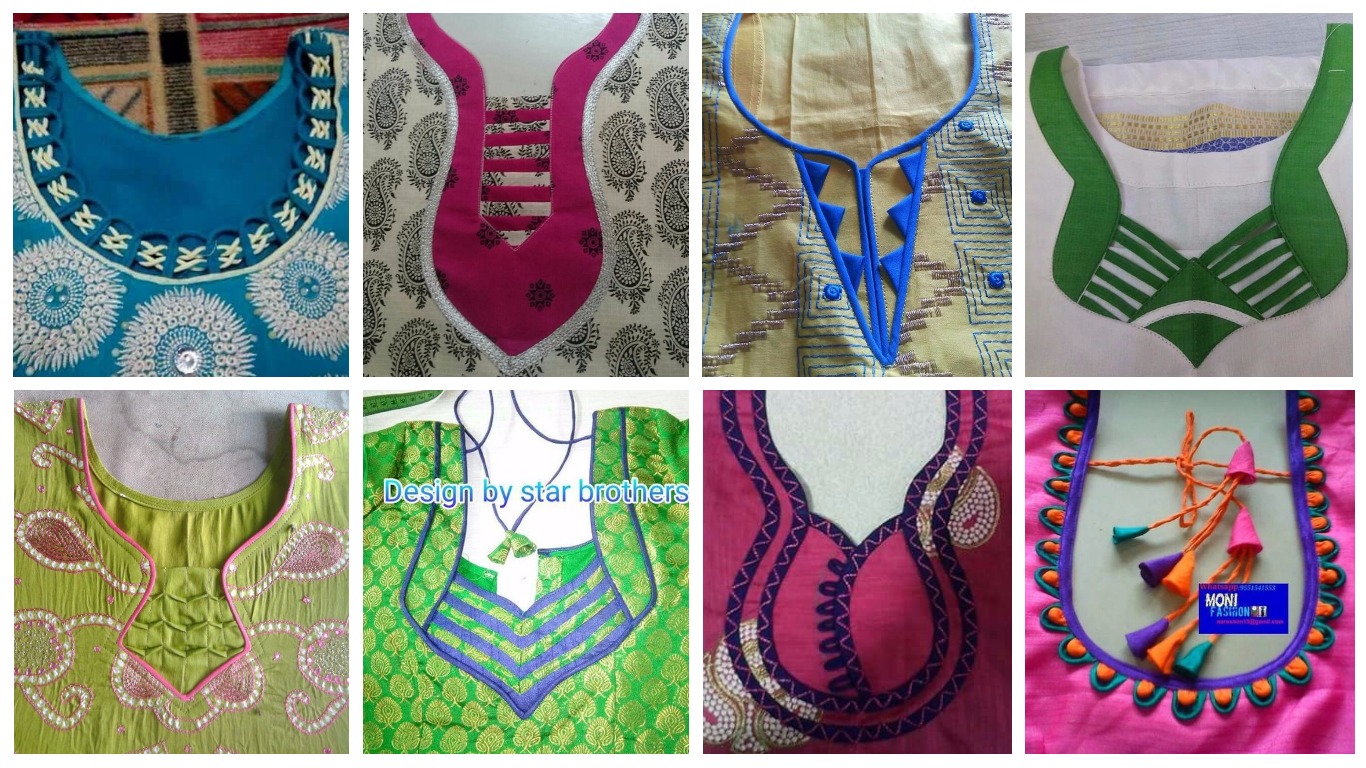
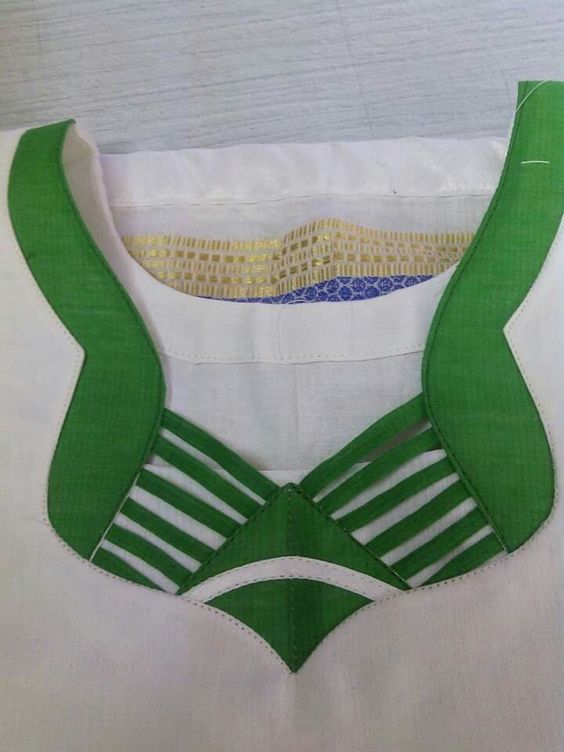
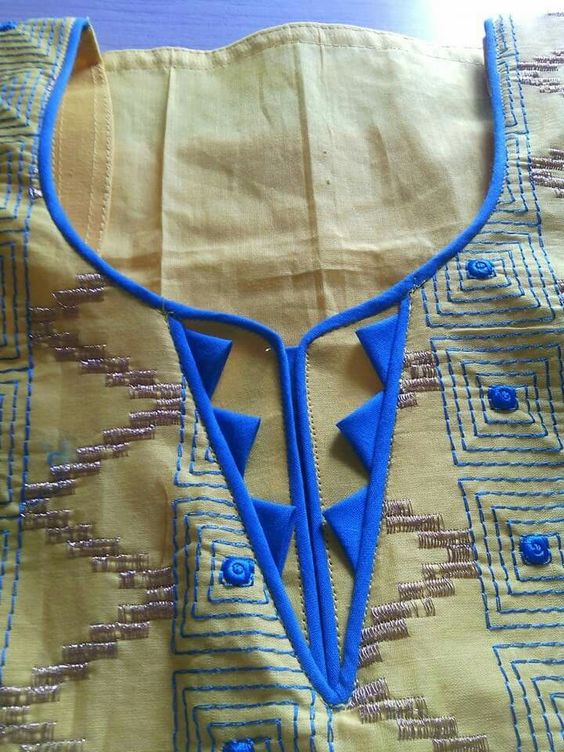

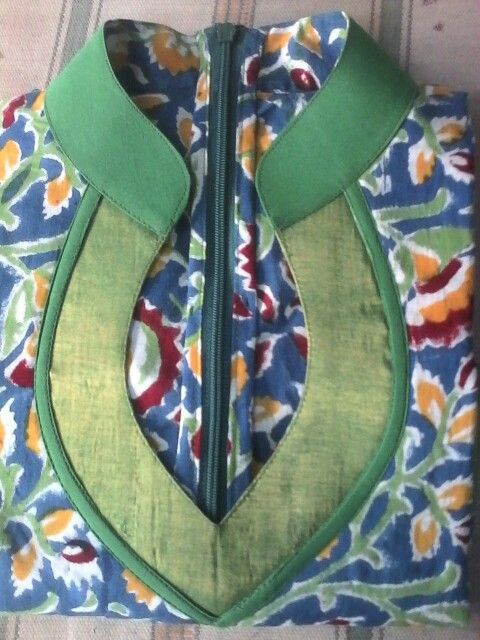


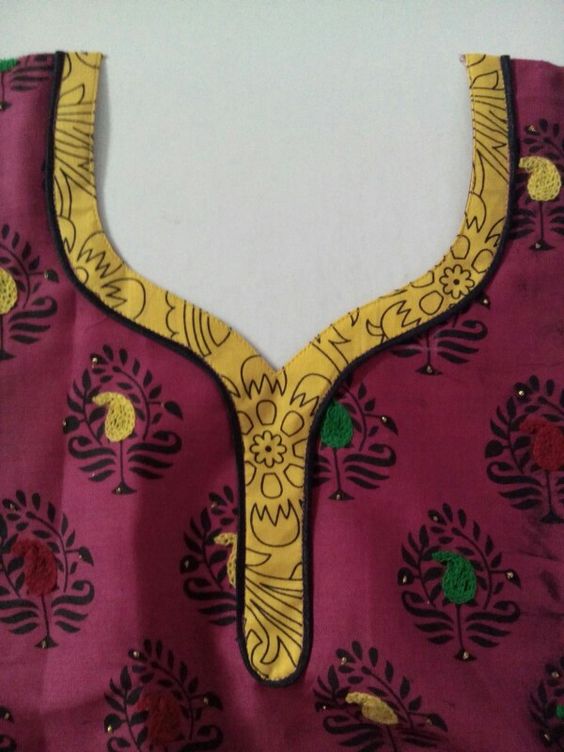
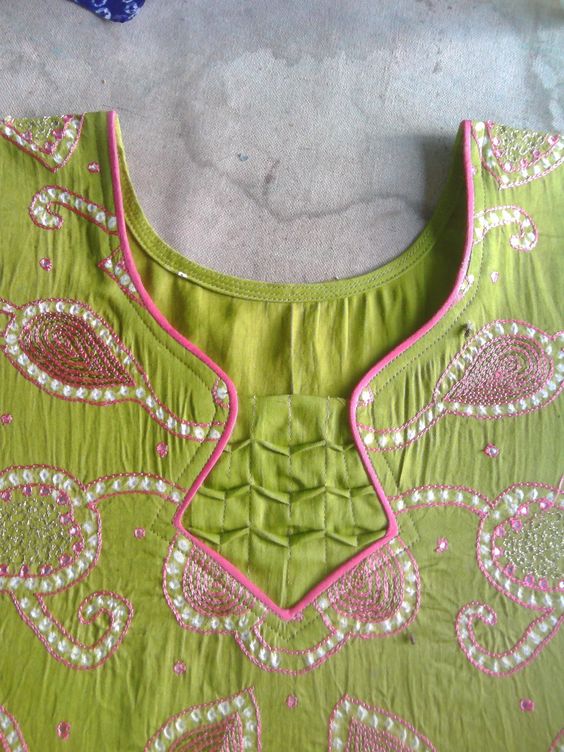


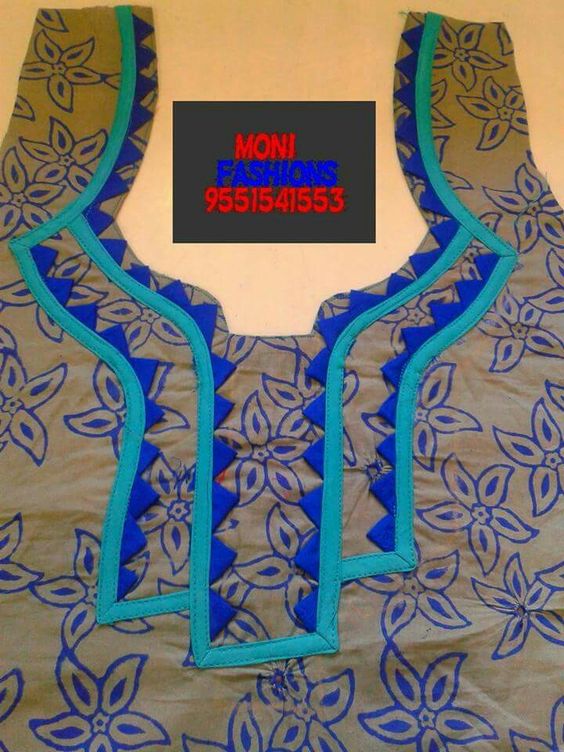


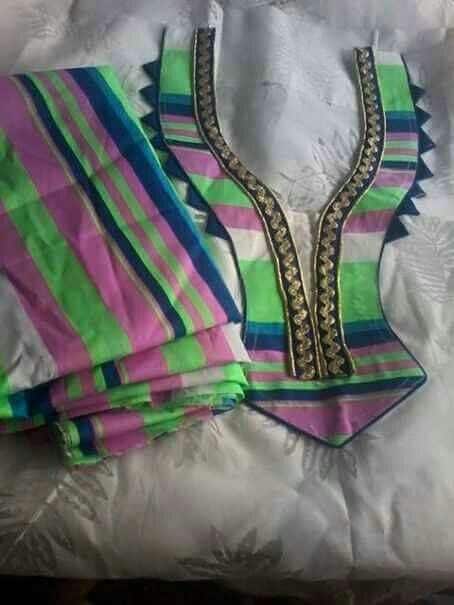
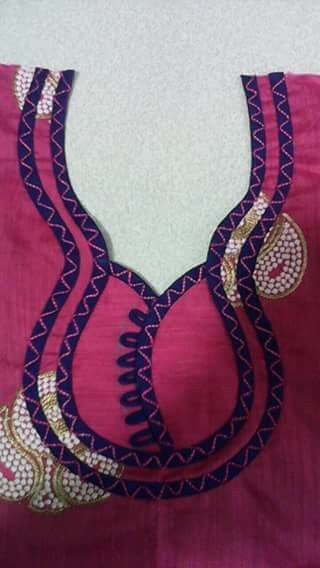


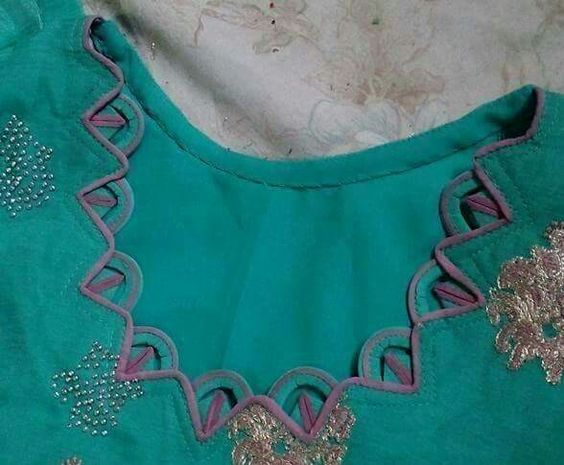
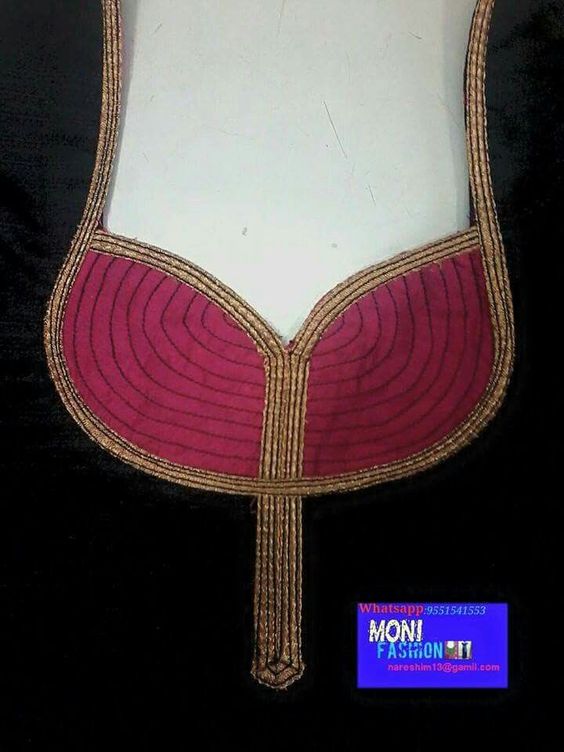
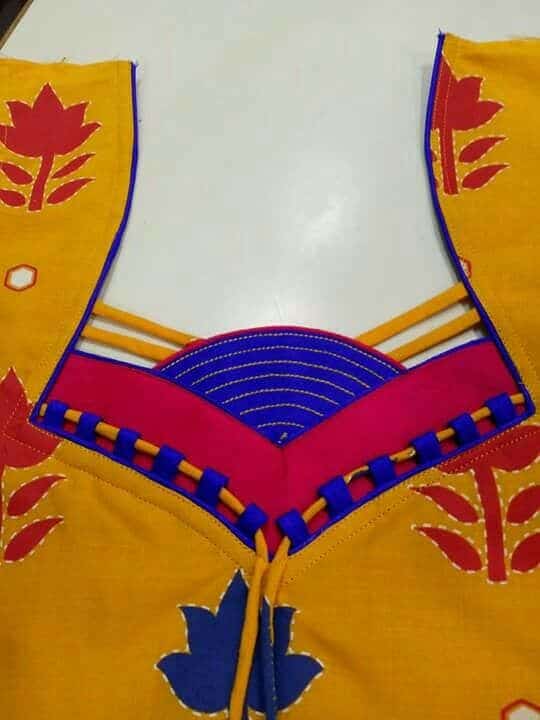

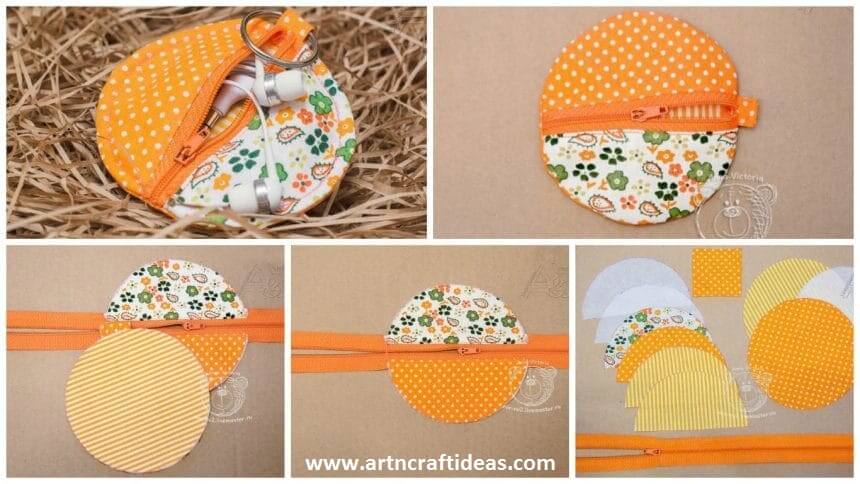

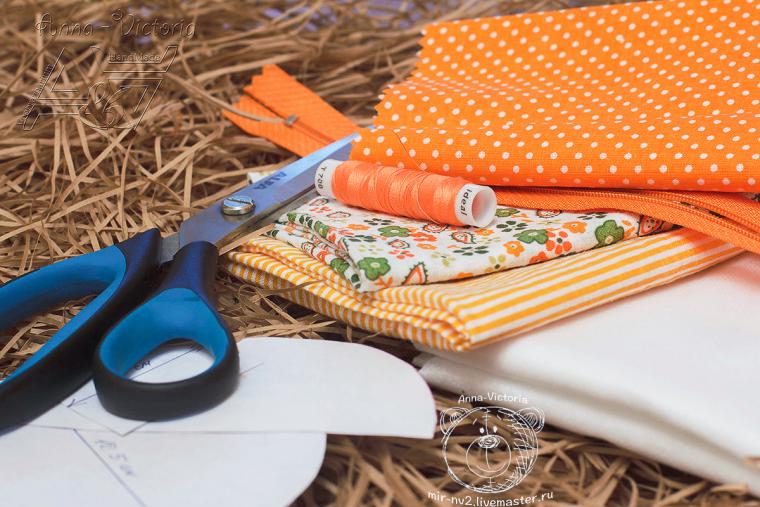
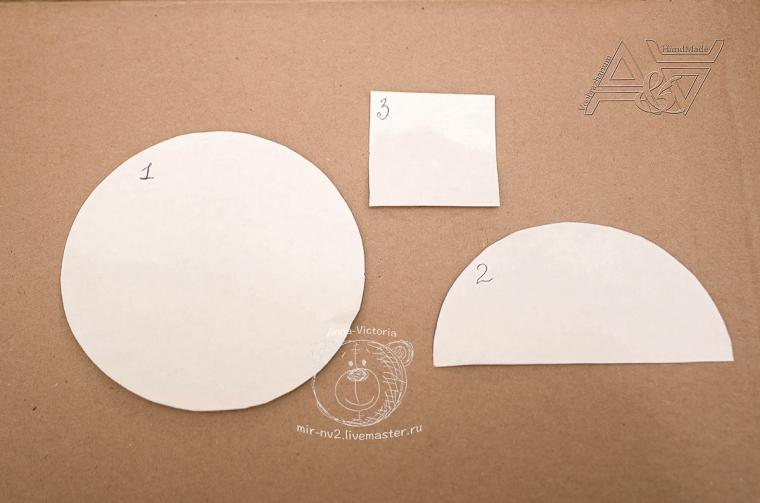
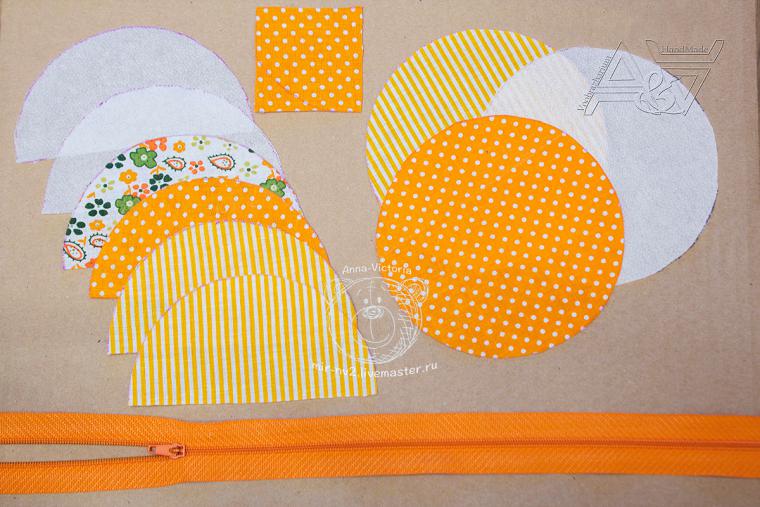
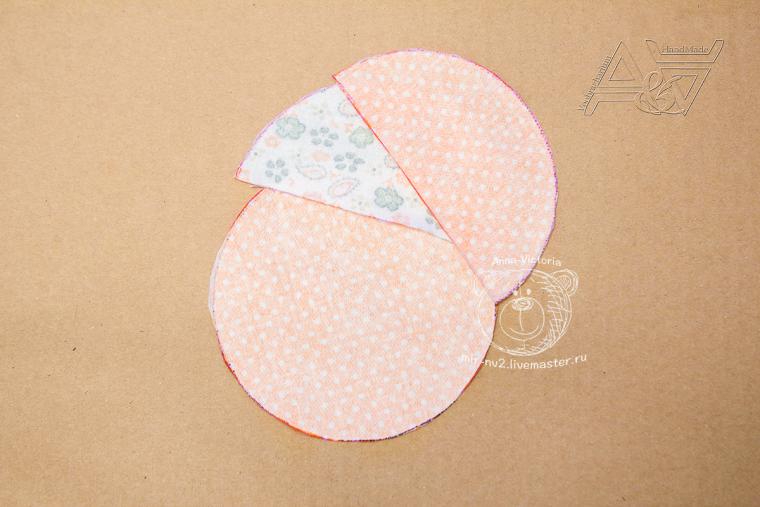
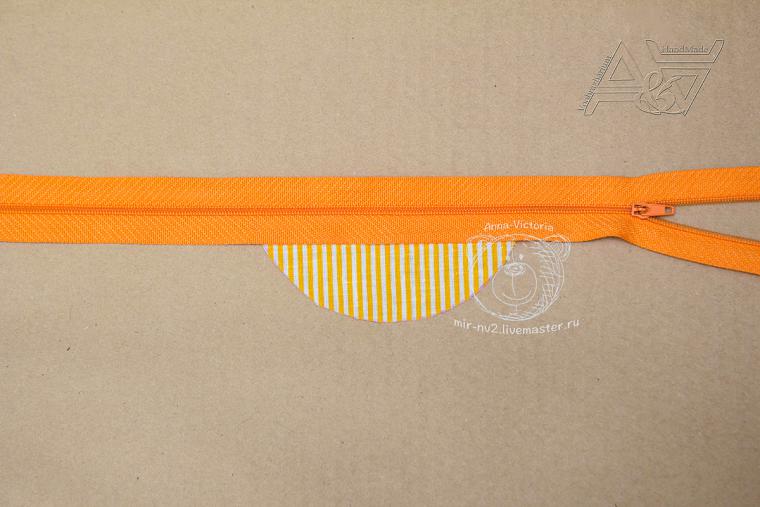
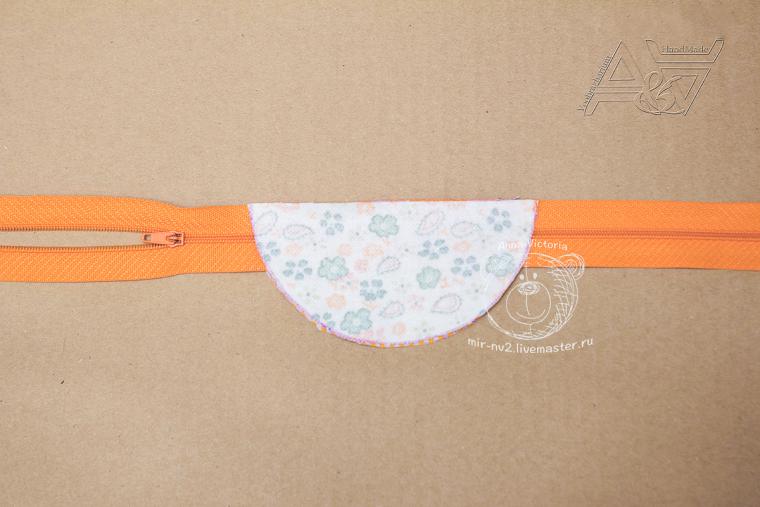
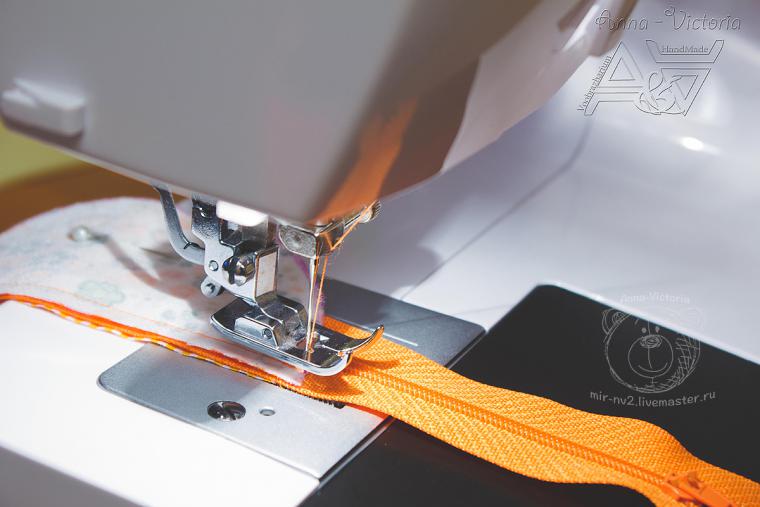

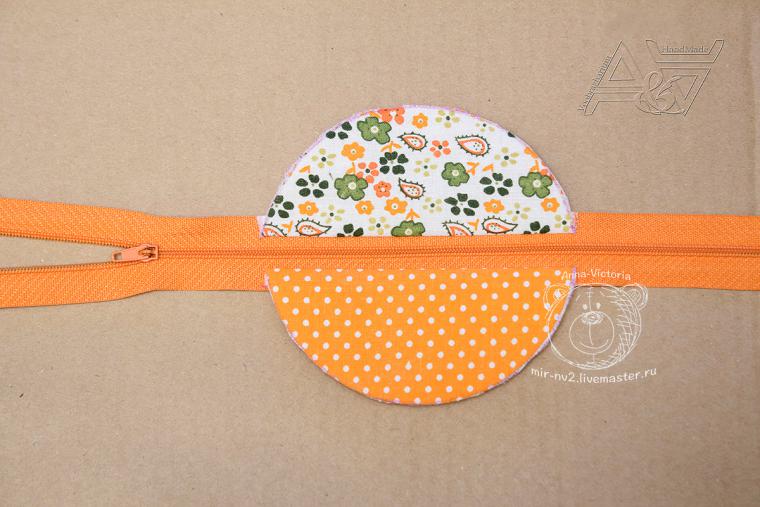
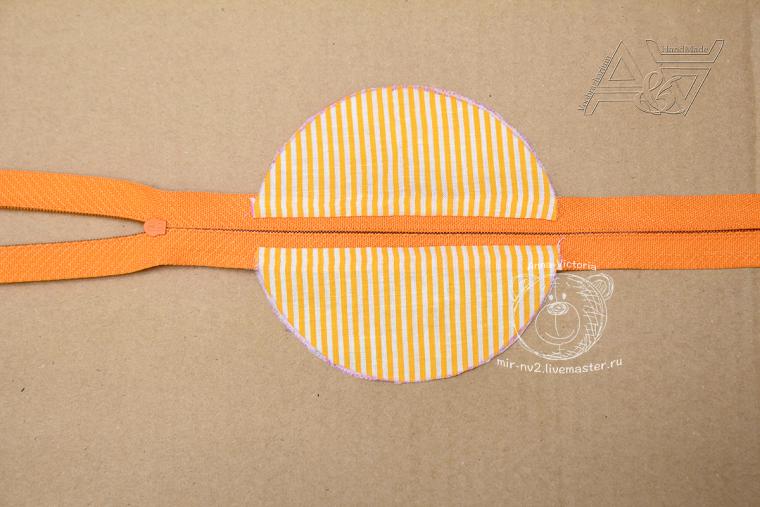



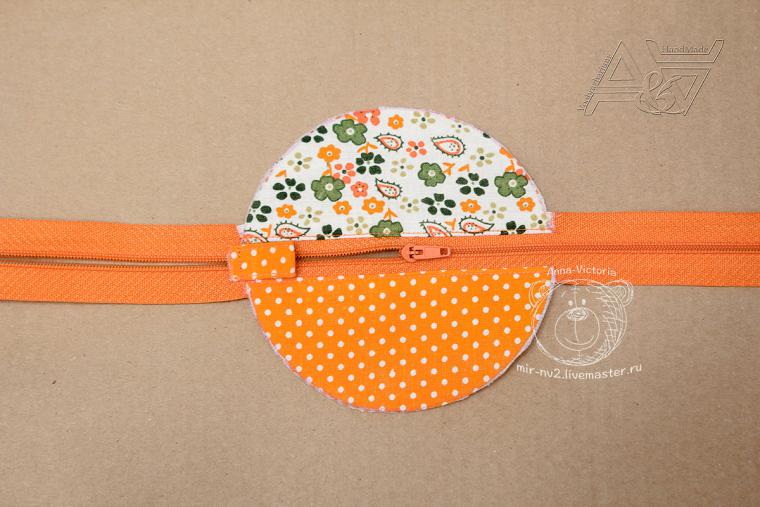

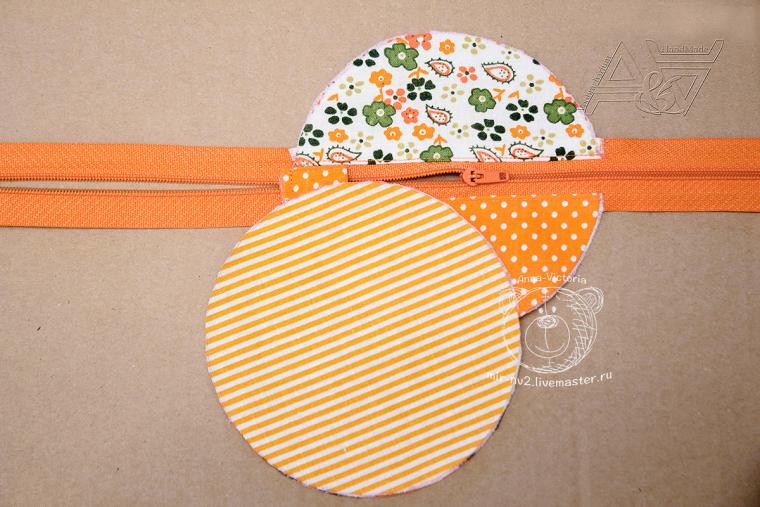
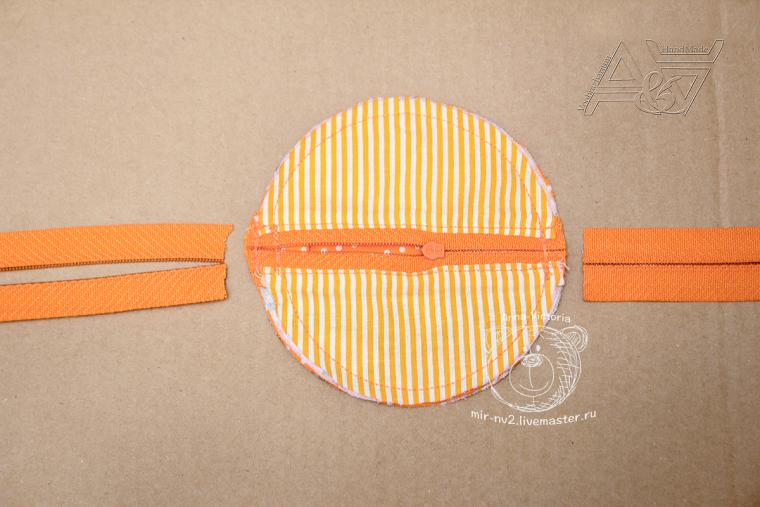

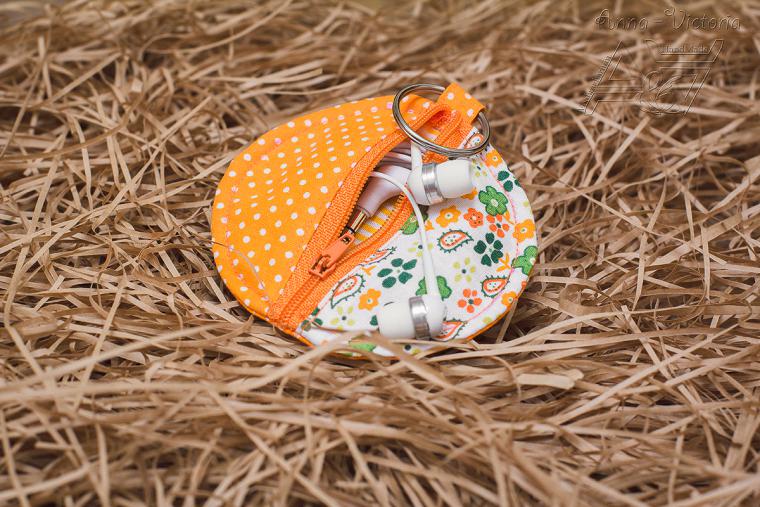

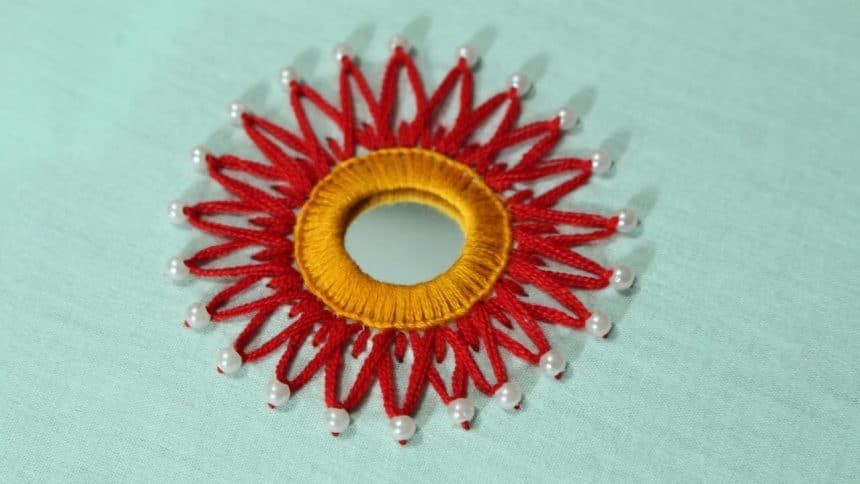

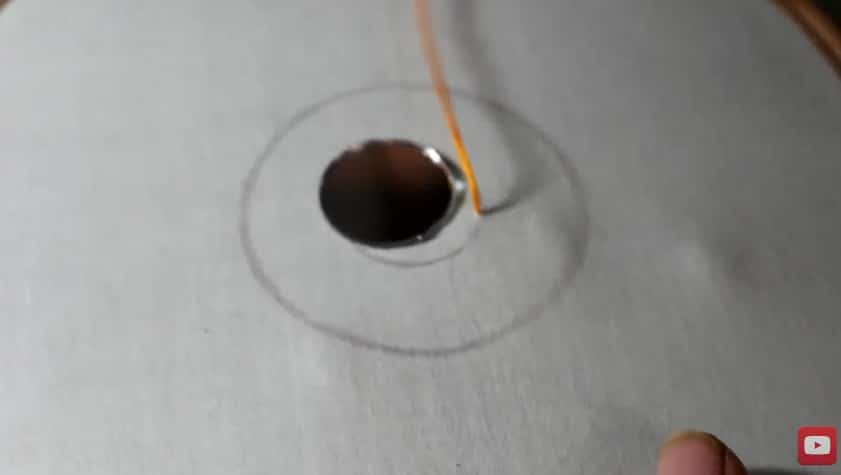


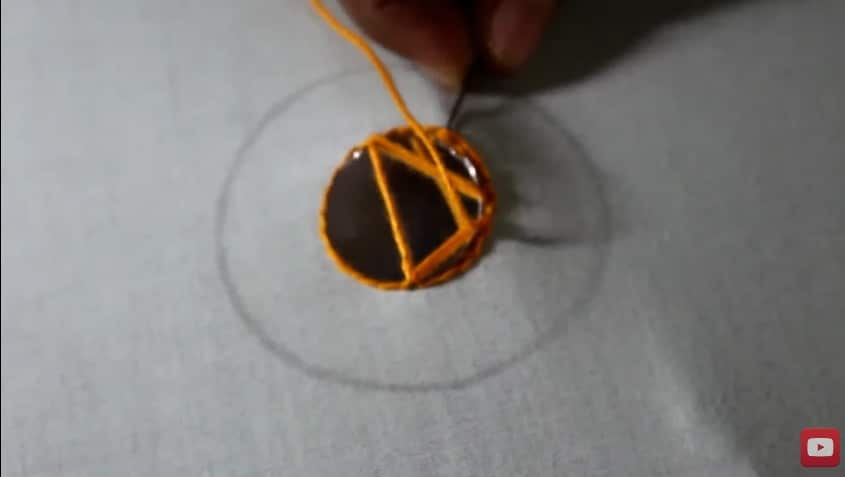

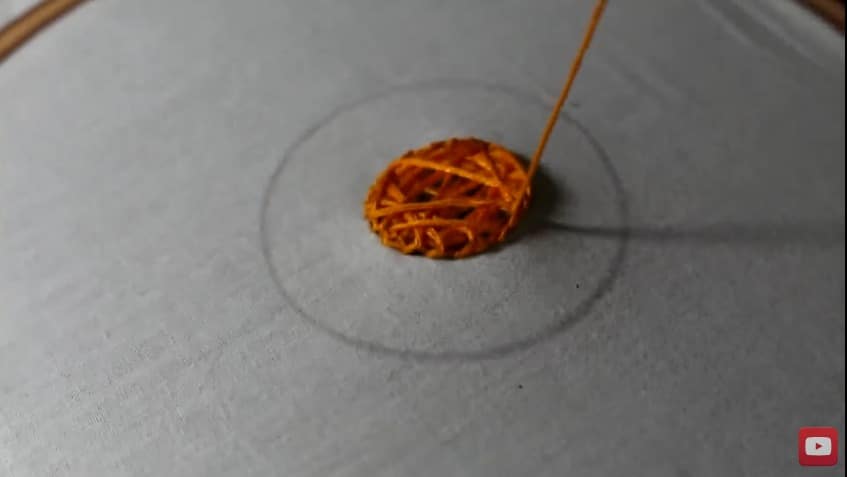
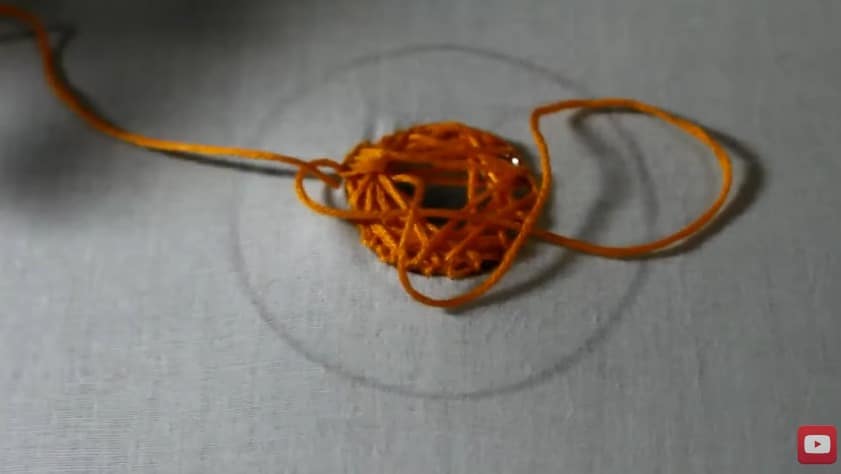
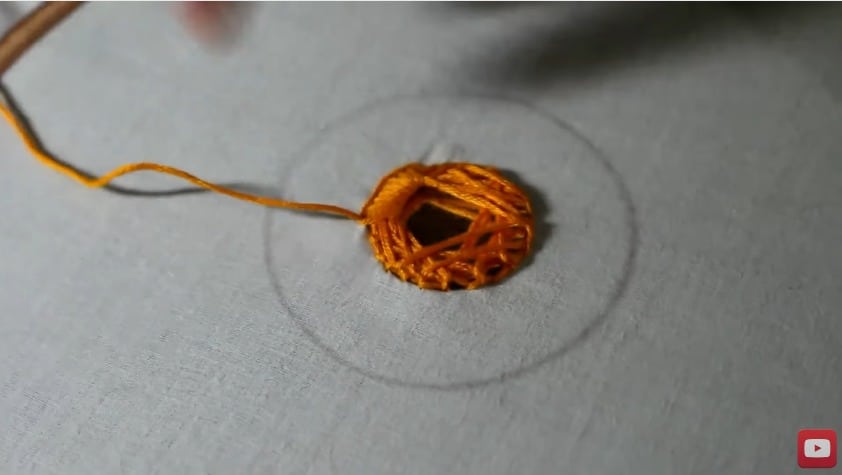

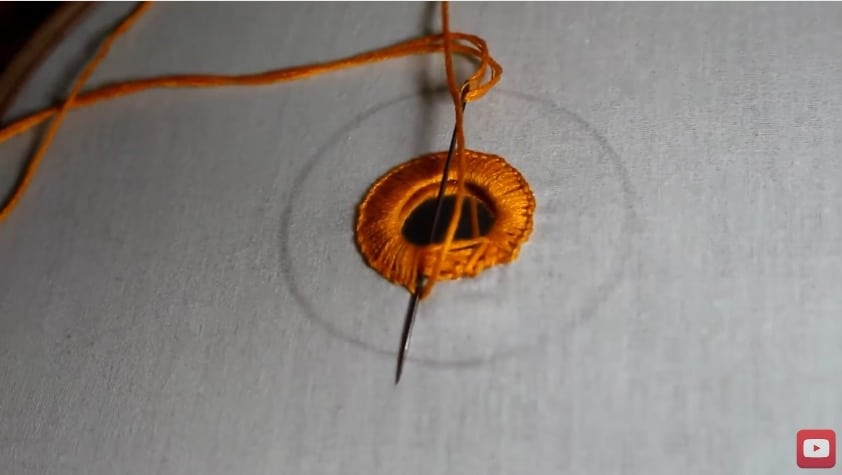


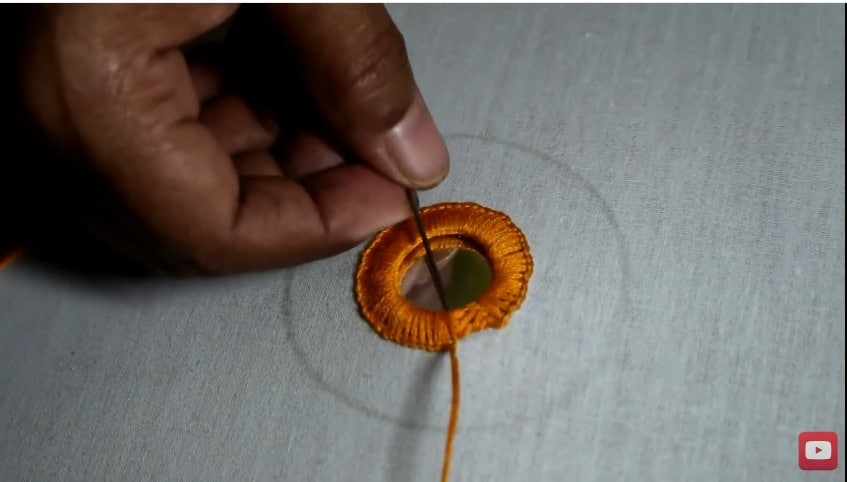
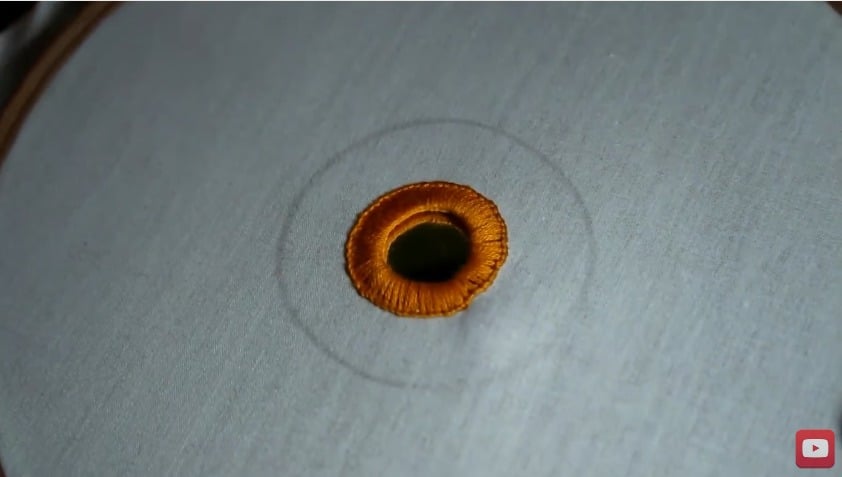
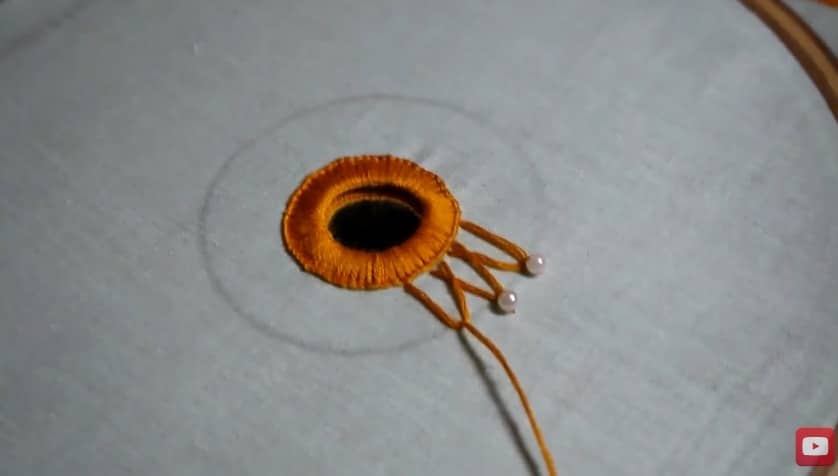
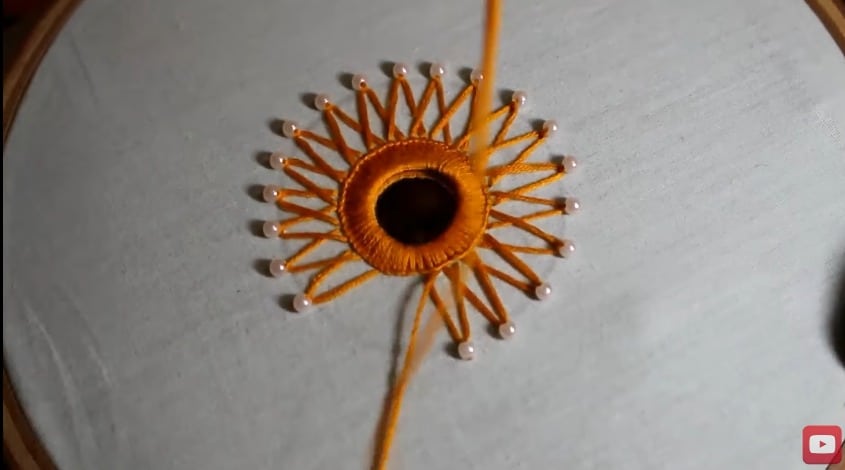
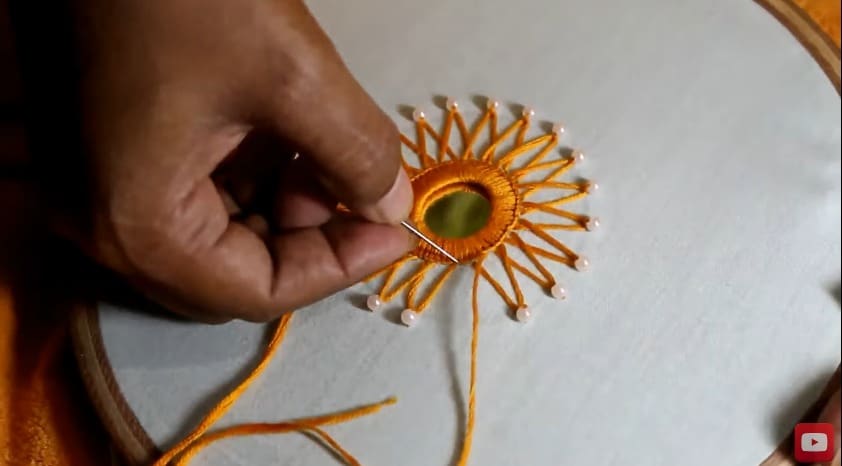
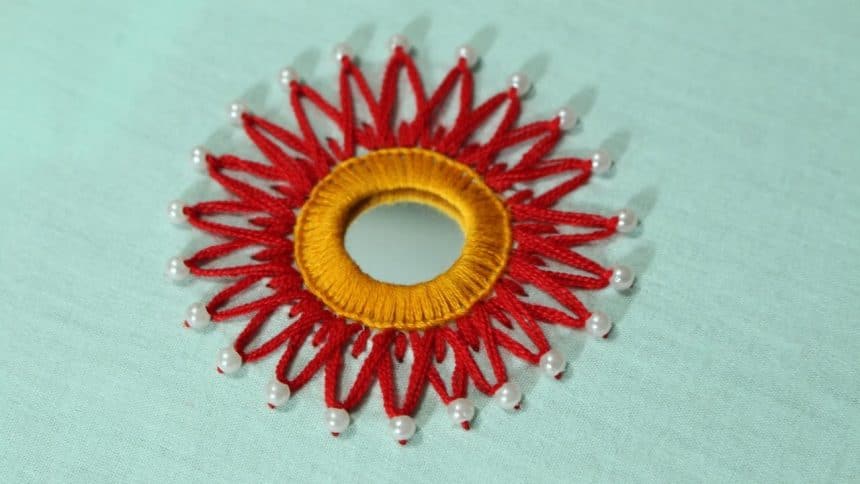
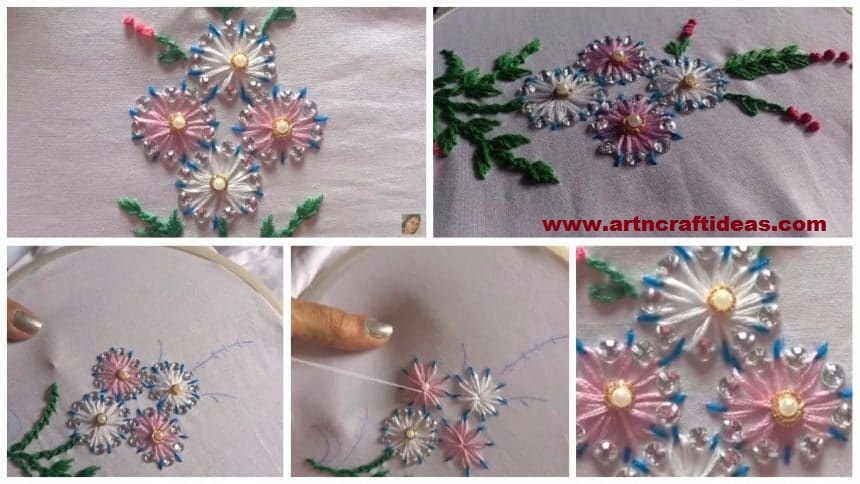
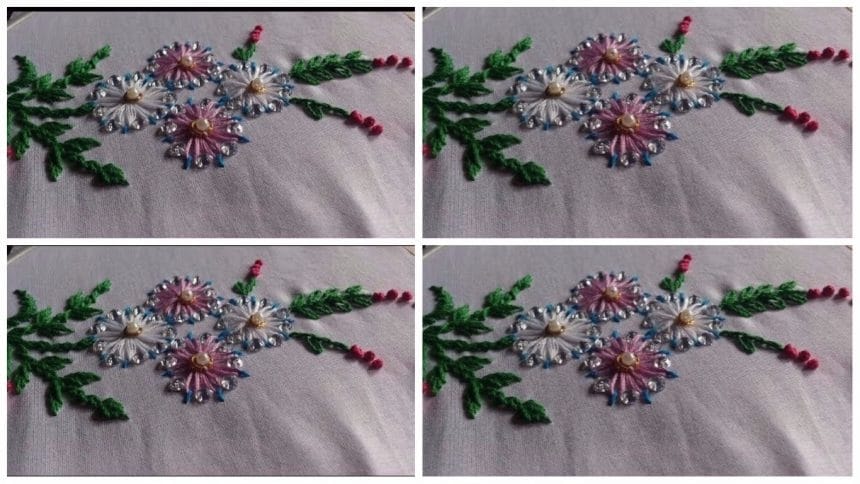
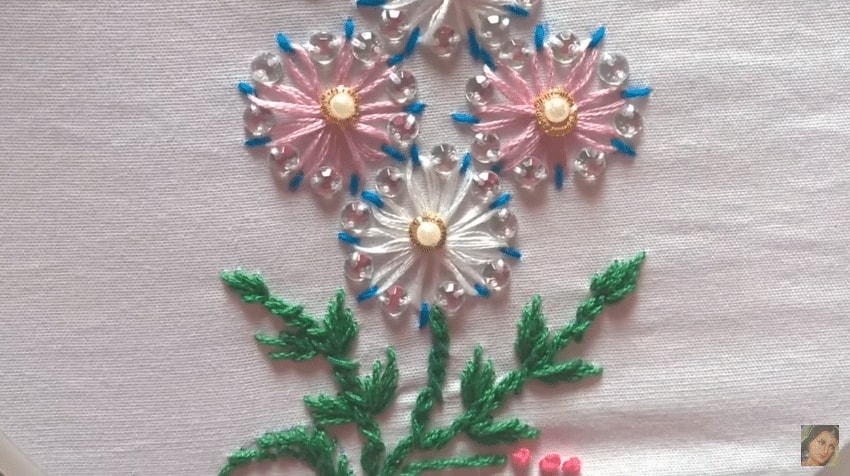
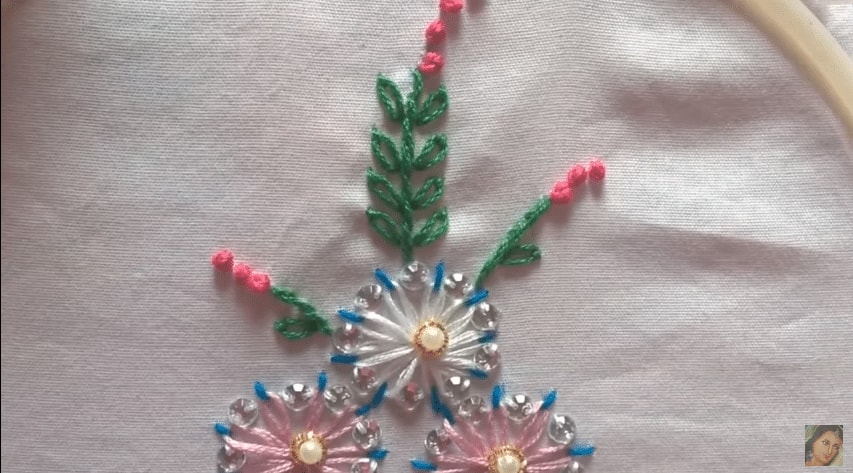

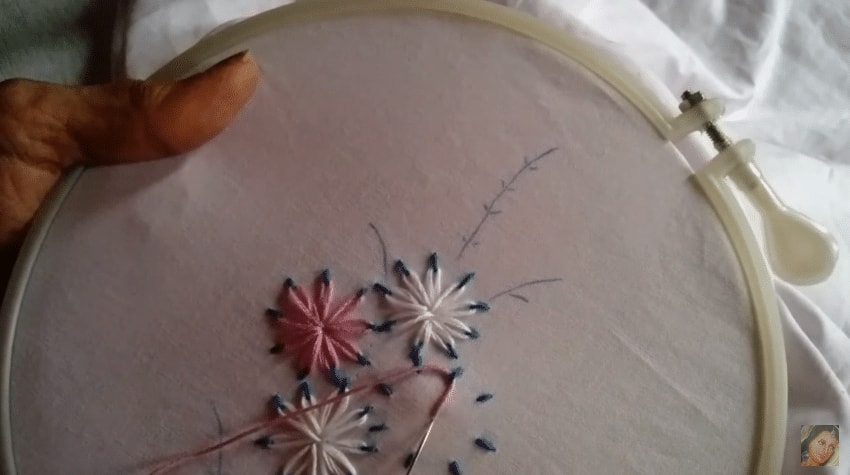


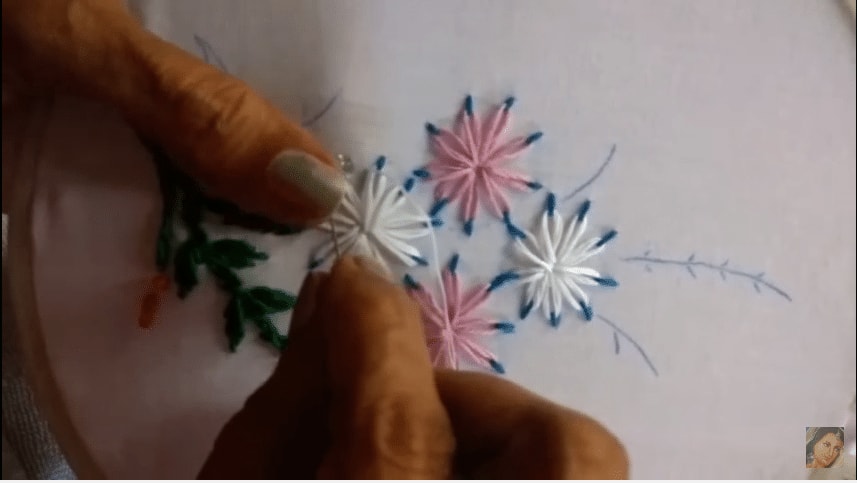
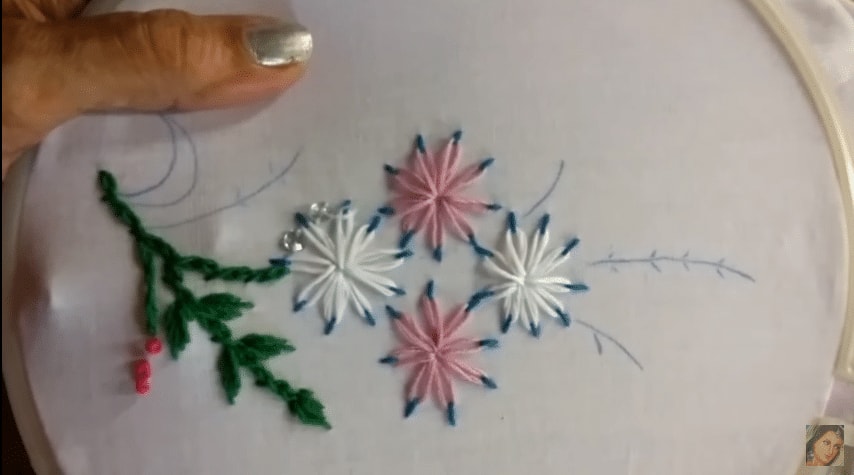
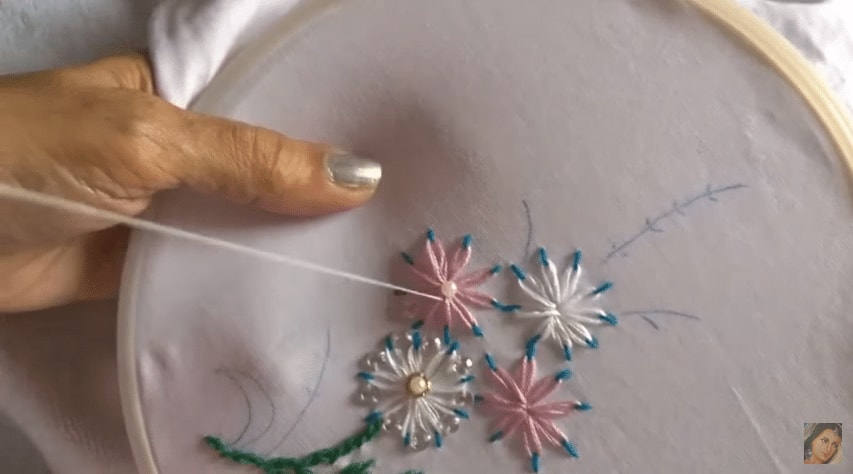
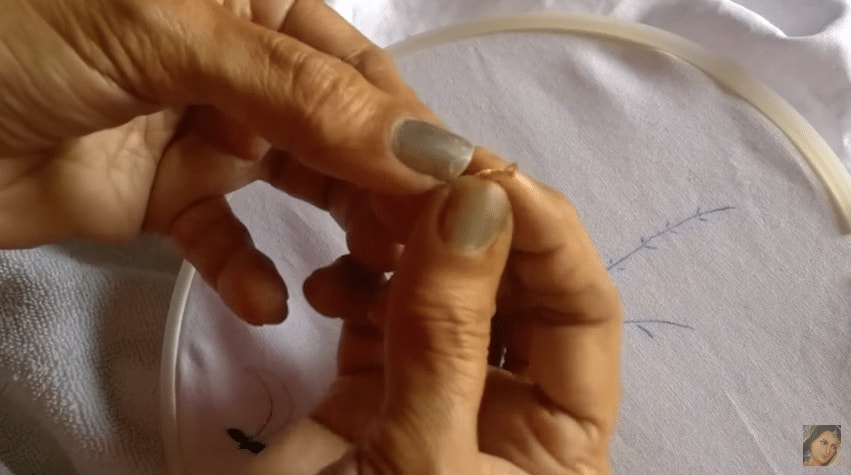
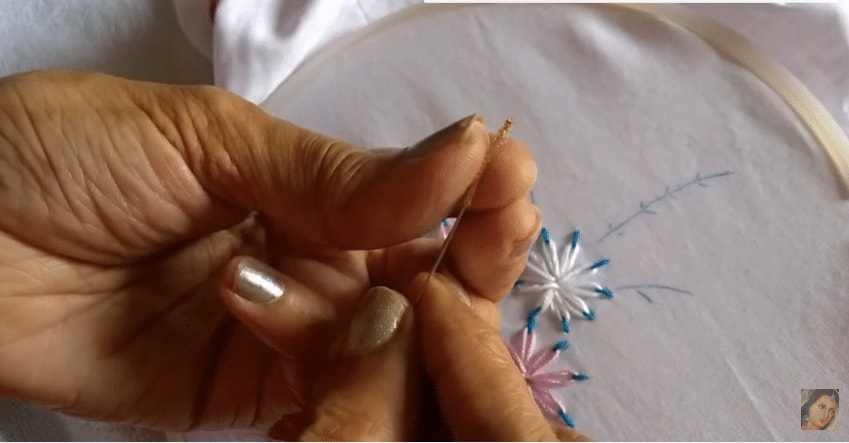

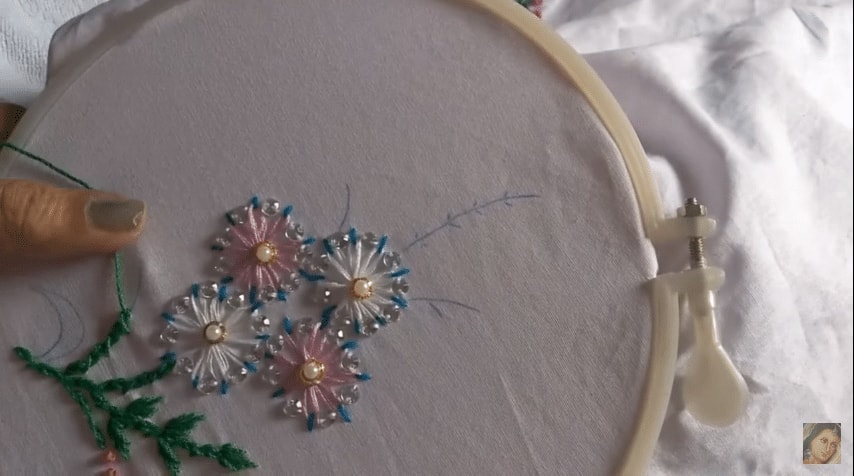
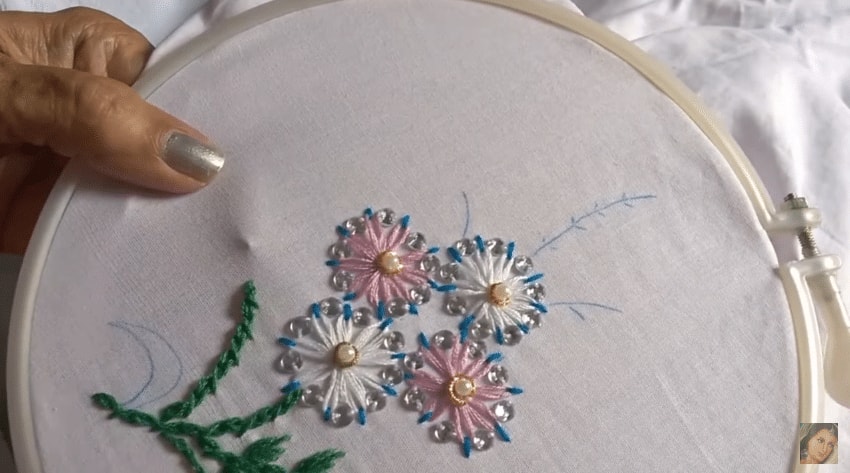

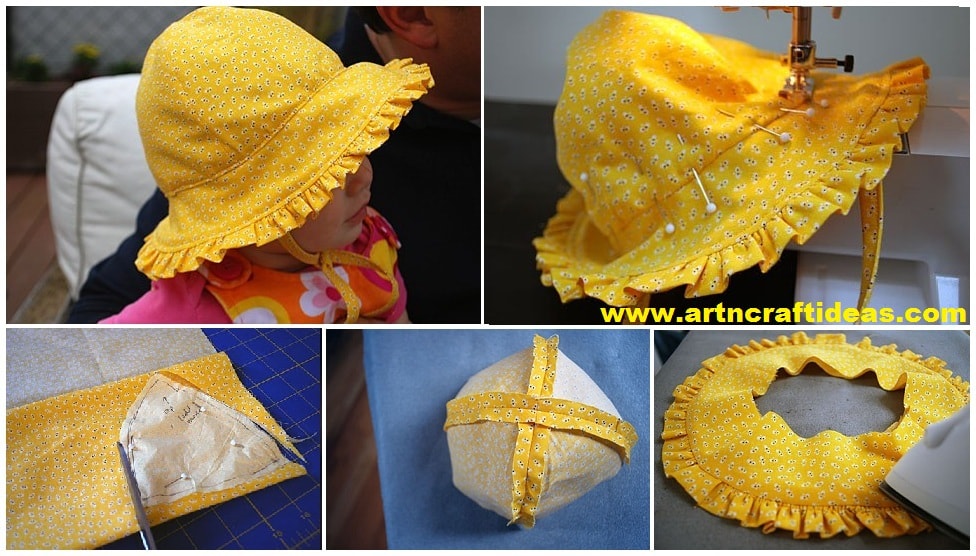
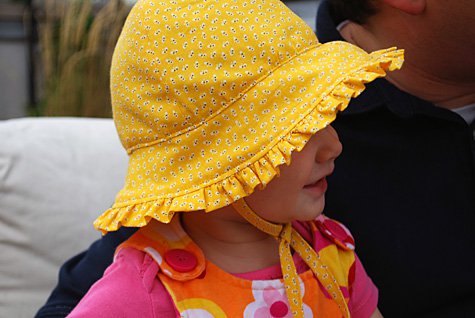 Free tutorial, baby sunhat pattern and step-by-step instructions are all below. Bring on the sunshine!
Free tutorial, baby sunhat pattern and step-by-step instructions are all below. Bring on the sunshine!
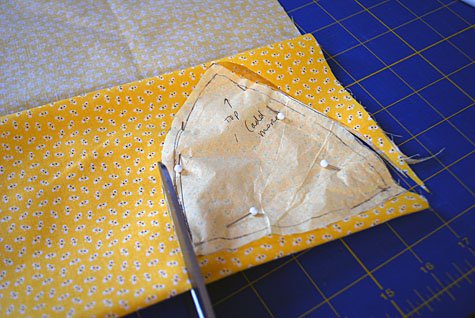
 Press seams open; they will be slightly curved.
Press seams open; they will be slightly curved.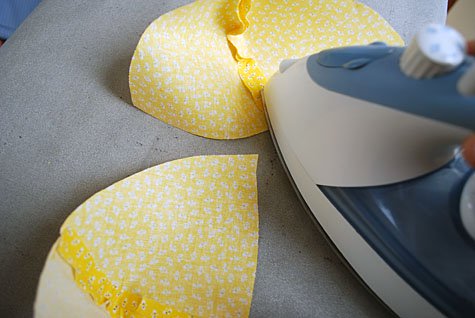 Pin the two pieces together, right sides together.
Pin the two pieces together, right sides together.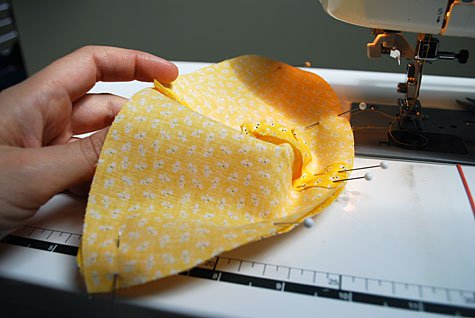 Sew. You’ll now have one sewn crown piece. Press the seam open.
Sew. You’ll now have one sewn crown piece. Press the seam open. Repeat to make the lining crown.
Repeat to make the lining crown.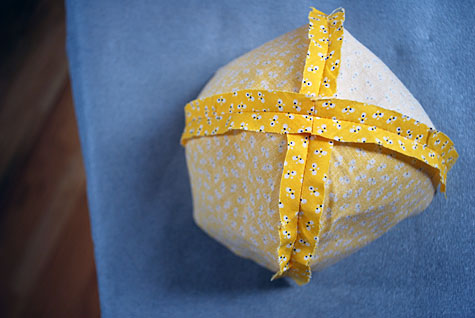
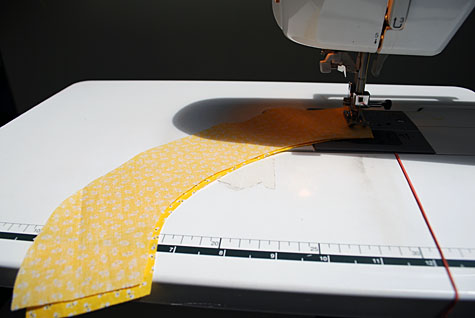 Create the ruffle
Create the ruffle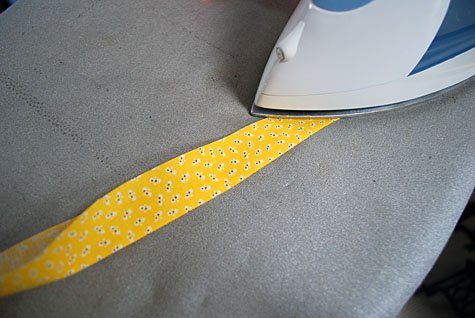 Using a basting stitch, sew two rows of stitching around the raw edge of the circle. I stop at the seams and then start again because I find it’s easier to gather (in the next step).
Using a basting stitch, sew two rows of stitching around the raw edge of the circle. I stop at the seams and then start again because I find it’s easier to gather (in the next step).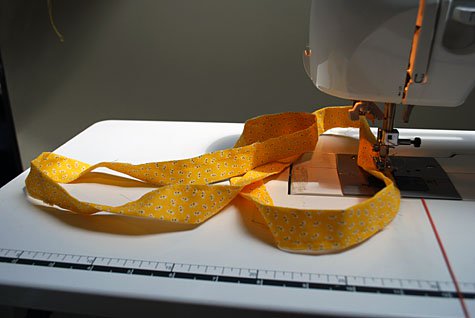 Match the seams of the ruffle to the seams of the brim. Pin. Pull the gathering threads gently to gather the fabric into ruffles. Pull it until it’s the same size as the outside of the brim. Pin the ruffle onto the edge of the brim, raw edges together.
Match the seams of the ruffle to the seams of the brim. Pin. Pull the gathering threads gently to gather the fabric into ruffles. Pull it until it’s the same size as the outside of the brim. Pin the ruffle onto the edge of the brim, raw edges together.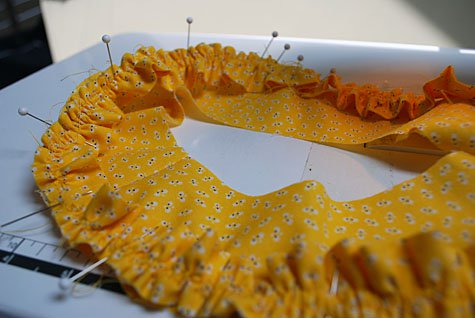 Sew the ruffle onto the brim.
Sew the ruffle onto the brim. Place the other brim piece on top of the ruffle piece you just sewed, basically making a ruffle sandwich with the two right sides together. Pin and sew.
Place the other brim piece on top of the ruffle piece you just sewed, basically making a ruffle sandwich with the two right sides together. Pin and sew.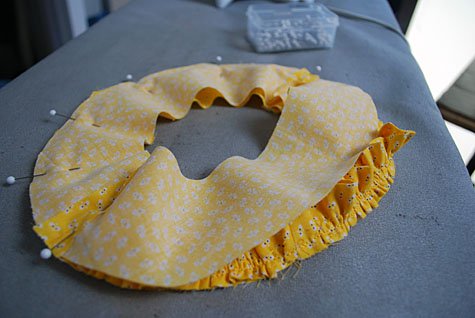 Turn right side out and iron. Finished brim is 18 inches circumference.
Turn right side out and iron. Finished brim is 18 inches circumference. Topstitch the brim near the ruffle edge.
Topstitch the brim near the ruffle edge. Sew the brim shut by sewing close to the inside circle edge.
Sew the brim shut by sewing close to the inside circle edge.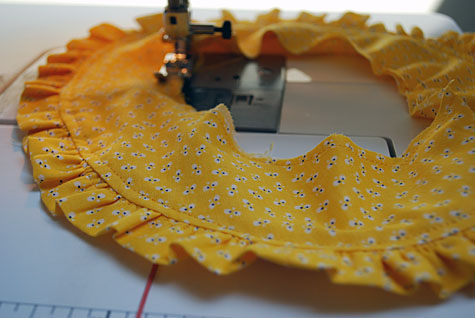
 On the right side of the hat, iron the seam open so the raw edges are up inside the crown. It’s starting to look like a hat now, yes?
On the right side of the hat, iron the seam open so the raw edges are up inside the crown. It’s starting to look like a hat now, yes? Make and attach ties
Make and attach ties On one end, make a triangle with the ends and fold in.
On one end, make a triangle with the ends and fold in.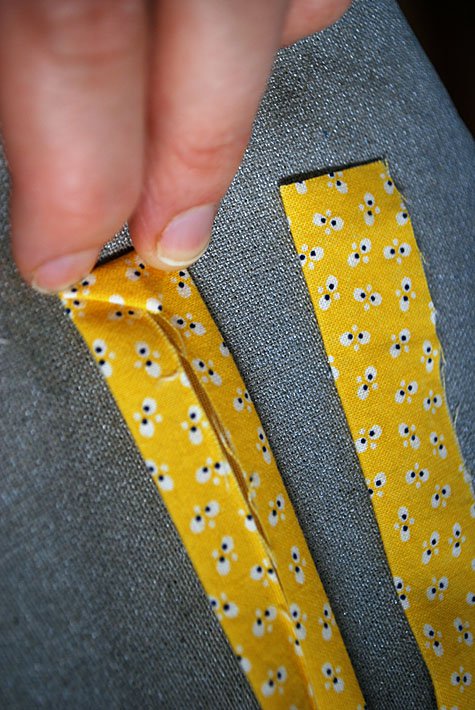 Sew along the open edge of the tie to sew it shut. Repeat for the second tie.
Sew along the open edge of the tie to sew it shut. Repeat for the second tie.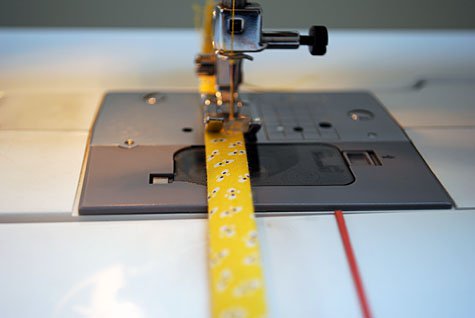 Now you’re going to attach the ties to the hat. Find the two sides of the hat. Pin the raw edge of the tie to the raw edge of the crown at the side seams.
Now you’re going to attach the ties to the hat. Find the two sides of the hat. Pin the raw edge of the tie to the raw edge of the crown at the side seams.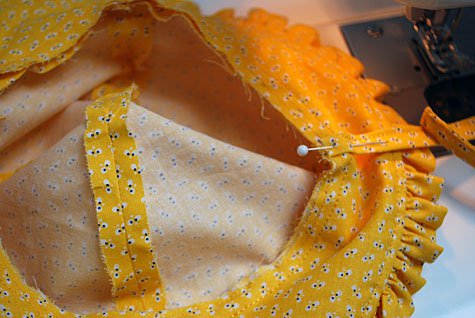 Sew back and forth a bunch of times so it’s secure. Repeat on the other side.
Sew back and forth a bunch of times so it’s secure. Repeat on the other side. Attach hat lining
Attach hat lining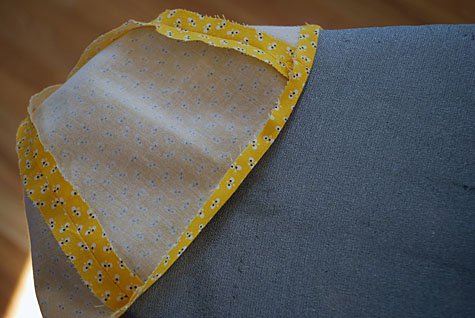 Turn the lining so the wrong side is on the outside. Pin the lining inside the hat, matching seams. Put your pins on the outside of the hat because you’ll be sewing from that side to make sure it looks nice on the outside.
Turn the lining so the wrong side is on the outside. Pin the lining inside the hat, matching seams. Put your pins on the outside of the hat because you’ll be sewing from that side to make sure it looks nice on the outside.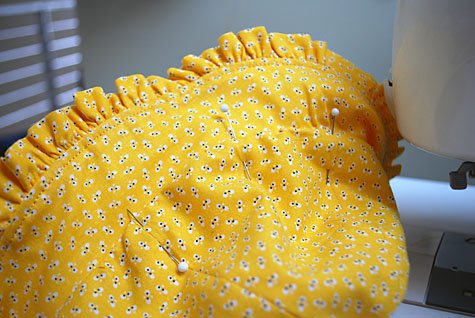 And here’s what it looks like inside…
And here’s what it looks like inside… Sew it all together, stitching close to the brim, catching the lining underneath as you go. I’m not a huge fan of blind stitching like this but it’s the way I figured out how to do it, so there you go. Suggestions welcome.
Sew it all together, stitching close to the brim, catching the lining underneath as you go. I’m not a huge fan of blind stitching like this but it’s the way I figured out how to do it, so there you go. Suggestions welcome.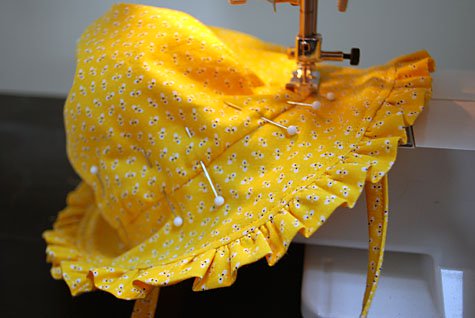 Tie that hat on and go outside!
Tie that hat on and go outside!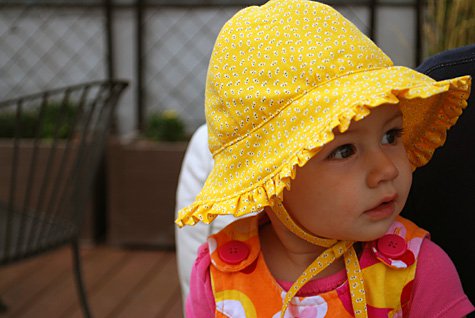



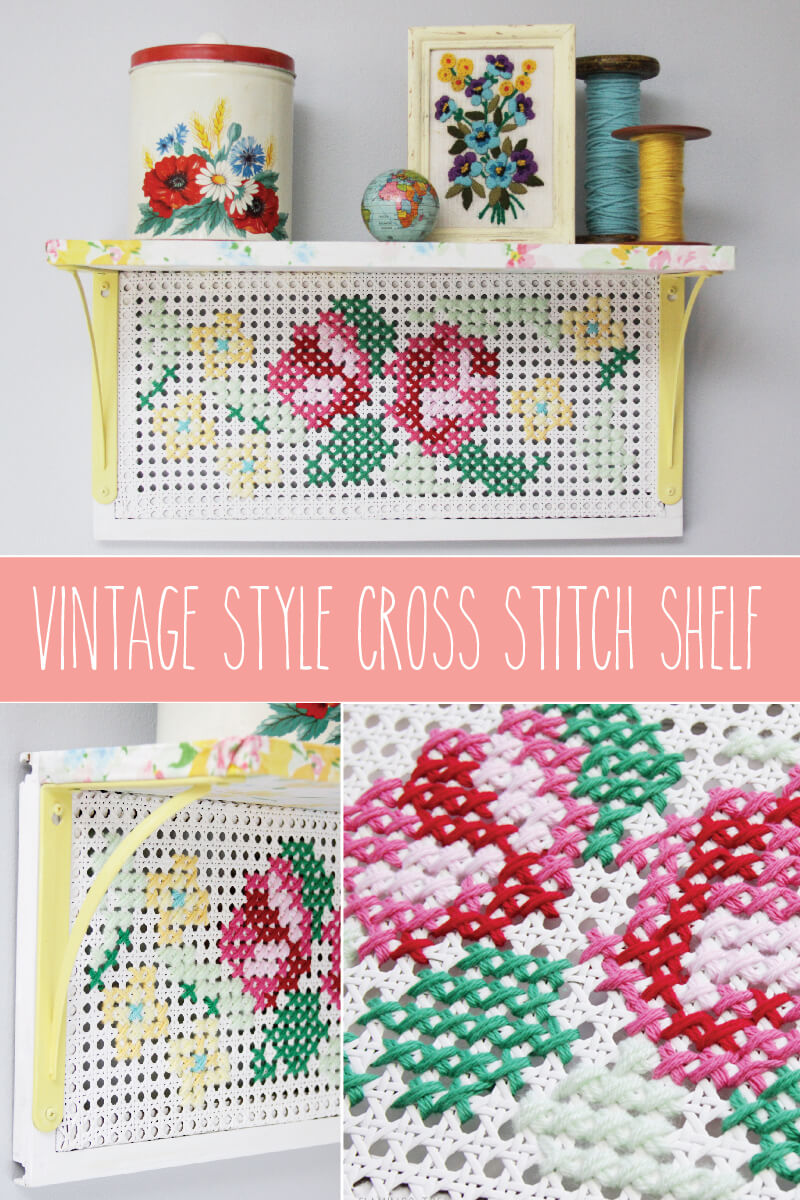
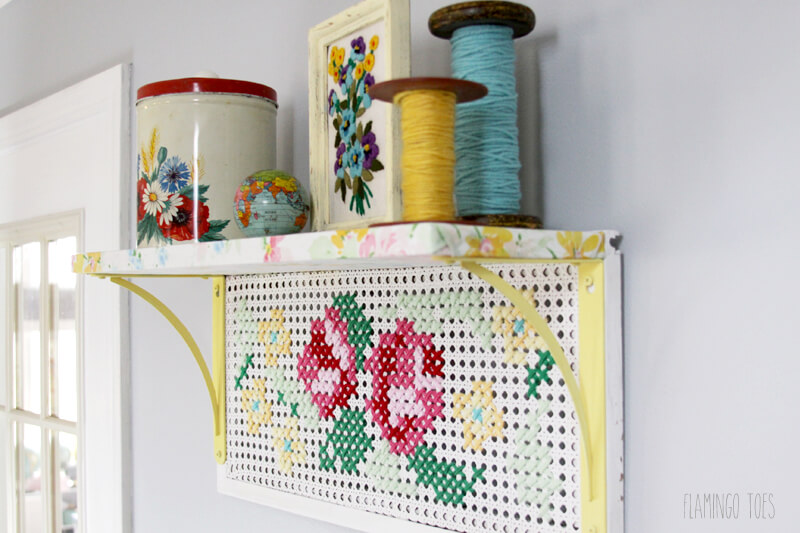
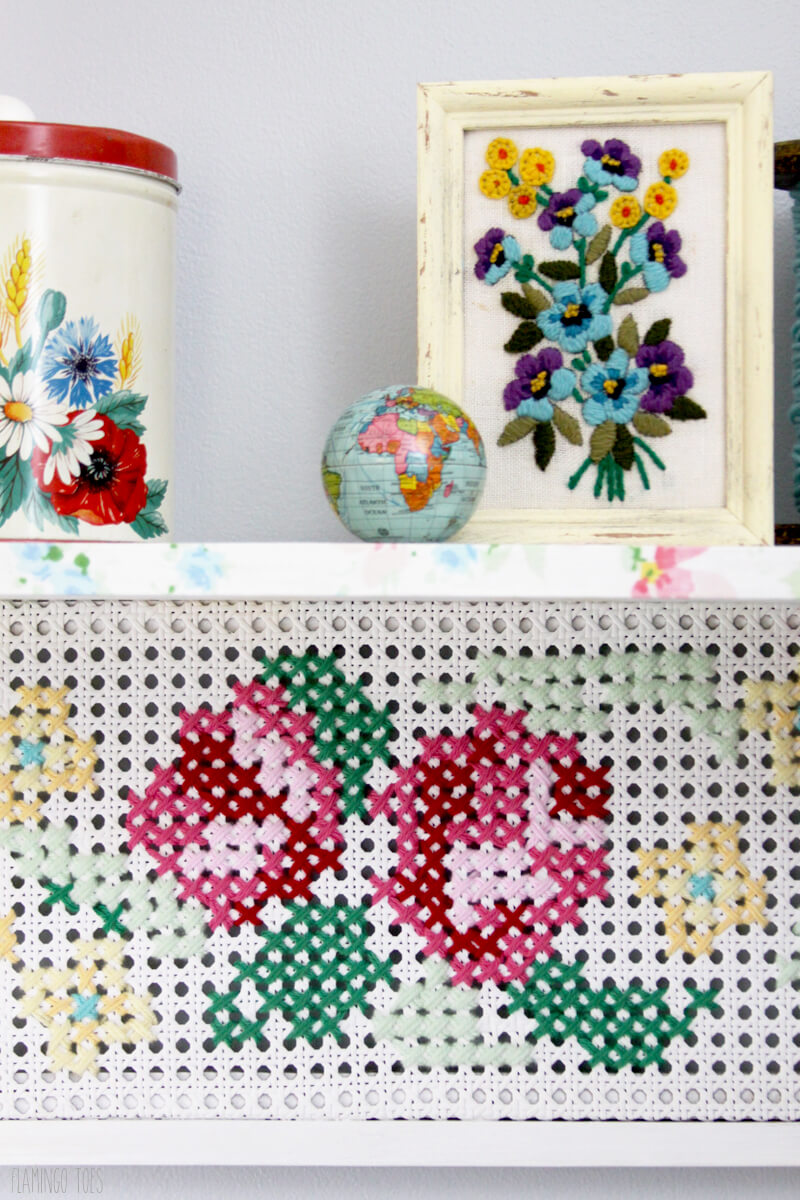
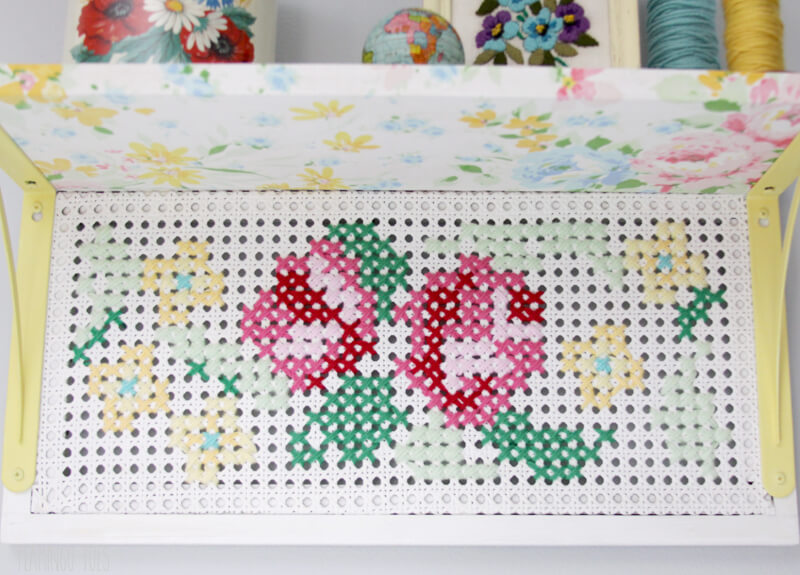
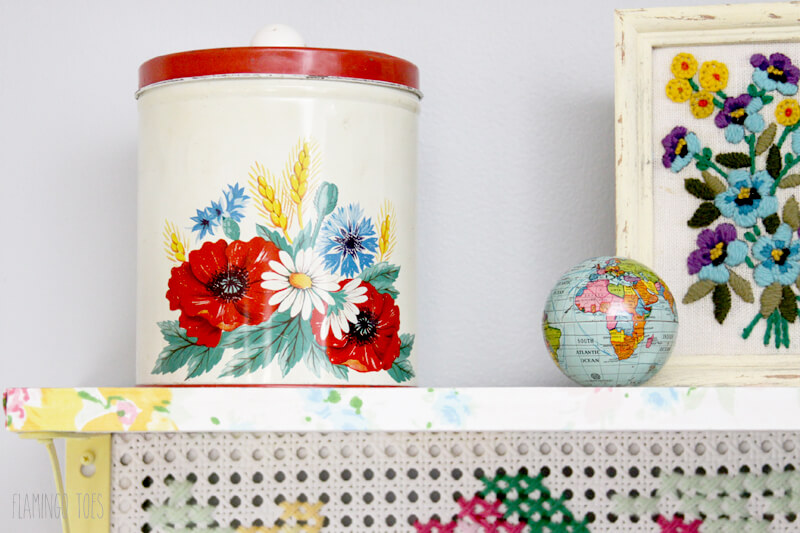 I started with this old cane shutter. It was white and kind of chippy, but kind of dingy too. I wanted something a little less “worn” looking.
I started with this old cane shutter. It was white and kind of chippy, but kind of dingy too. I wanted something a little less “worn” looking.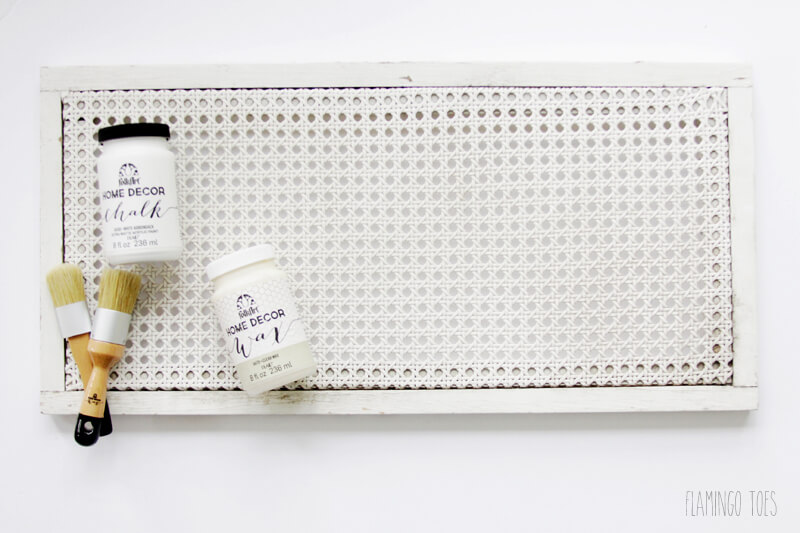 I gave the whole thing a coat of Folk Art® Home Decor Chalk in White Adirondack. It only took one coat, I just wanted to freshen things up. After drying I brushed on the wax and now it has a pretty sheen too. Yay!
I gave the whole thing a coat of Folk Art® Home Decor Chalk in White Adirondack. It only took one coat, I just wanted to freshen things up. After drying I brushed on the wax and now it has a pretty sheen too. Yay!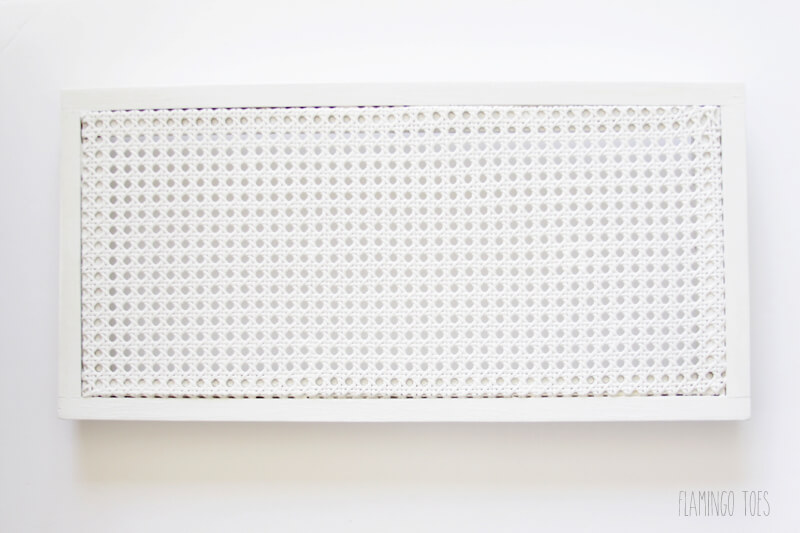 I couldn’t find brackets in a color I liked so I picked up white glossy metal brackets and painted them with the Folk Art Home Decor Chalk in Summer Porch. It’s the most delicious color of yellow. They got a coat of wax too.
I couldn’t find brackets in a color I liked so I picked up white glossy metal brackets and painted them with the Folk Art Home Decor Chalk in Summer Porch. It’s the most delicious color of yellow. They got a coat of wax too.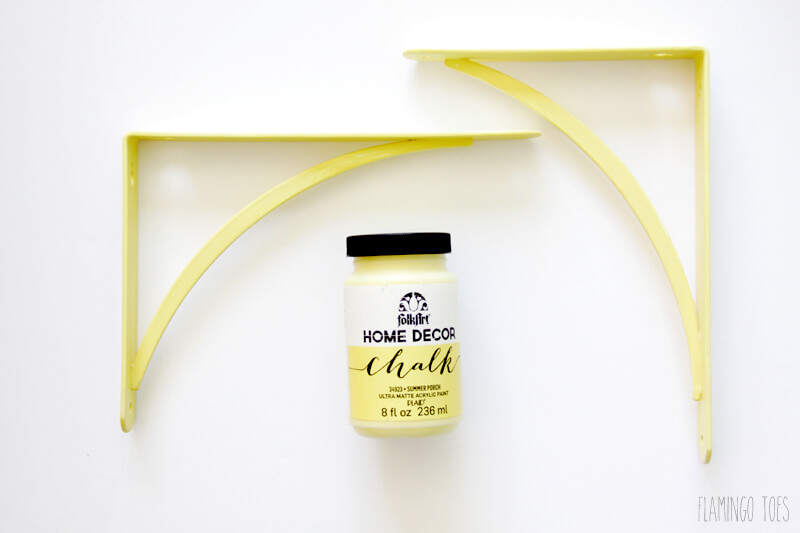 I knew that I wanted to use a light floral sheet to cover my top shelf. I cut a length of 8″ wide pine to the same length as my shelf. I covered that in one coat of the White Adirondack as well. I didn’t wax it though, since it was going to be covered with fabric.
I knew that I wanted to use a light floral sheet to cover my top shelf. I cut a length of 8″ wide pine to the same length as my shelf. I covered that in one coat of the White Adirondack as well. I didn’t wax it though, since it was going to be covered with fabric.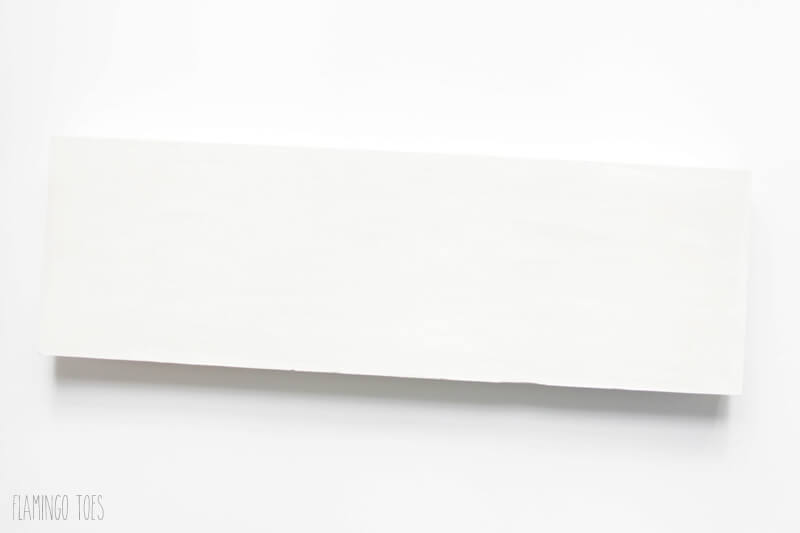
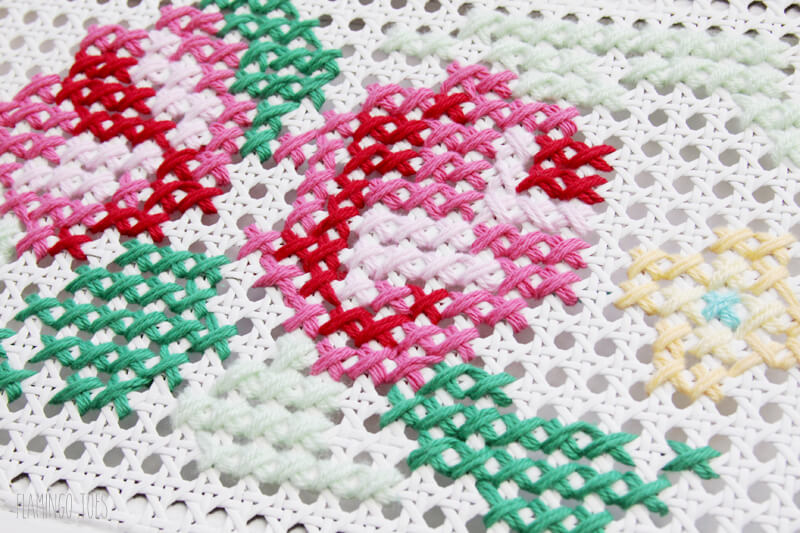 I stitched a floral pattern in colors similar to the fabric I was using on the top of the shelf.
I stitched a floral pattern in colors similar to the fabric I was using on the top of the shelf.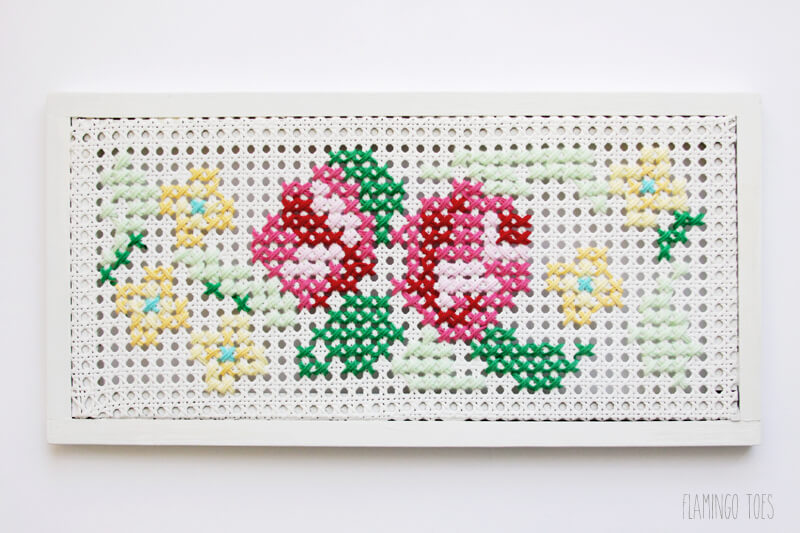
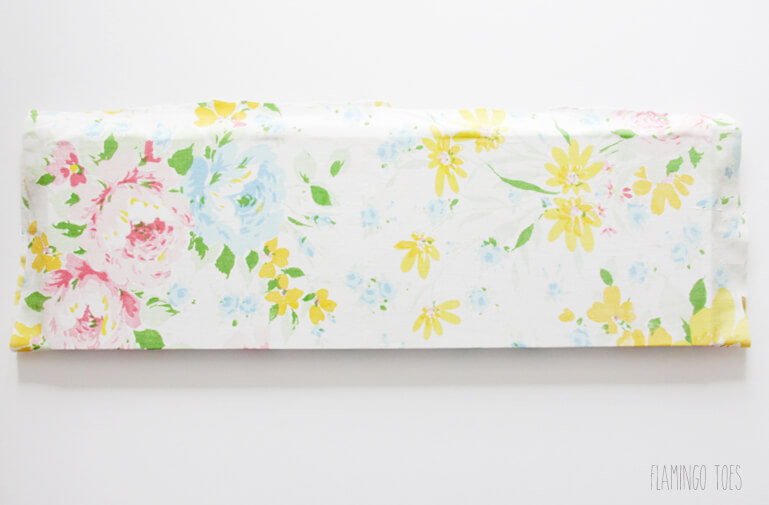
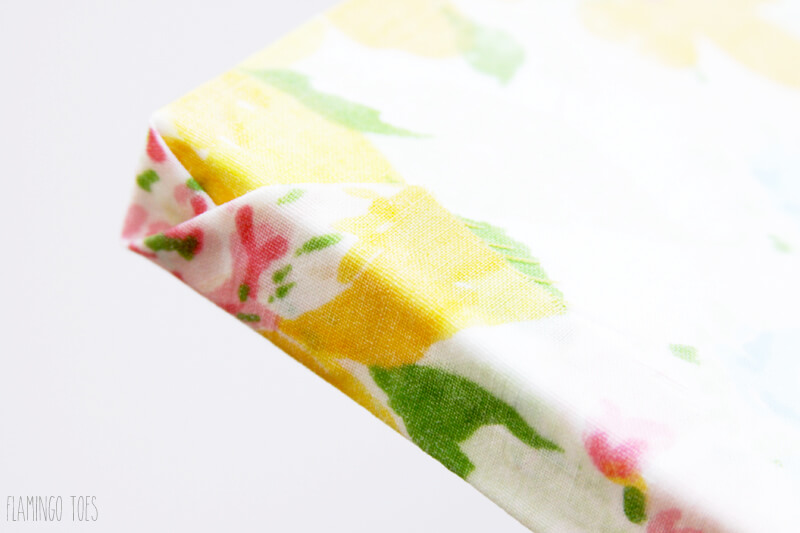
 I think it is such a fun piece and I’m going to love having it my studio. It’s so bright and colorful!
I think it is such a fun piece and I’m going to love having it my studio. It’s so bright and colorful!